#Desie Hartman
Text
LUX RADIO THEATRE presents FANCY PANTS
September 10, 1950

Lux Radio Theatre (1935-55) was a radio anthology series that adapted Broadway plays during its first two seasons before it began adapting films (”Lux Presents Hollywood”). These hour-long radio programs were performed live before studio audiences in Los Angeles. The series became the most popular dramatic anthology series on radio, broadcast for more than 20 years and continued on television as the Lux Video Theatre through most of the 1950s. The primary sponsor of the show was Unilever through its Lux Soap brand.

Fancy Pants was broadcast live from Hollywood on CBS Radio in front of a live audience.
Produced and Hosted by William Keighley
Written by Edmund Hartman, who also wrote the screenplay
Libby Collins is billed as a "Hollywood Reporter" during the Act One commecial break and Joan Taylor is guest for the Act Two commerical break.
THE CAST

Lucille Ball (Agatha Floud, American Debutante) was born on August 6, 1911 in Jamestown, New York. She began her screen career in 1933 and was known in Hollywood as ‘Queen of the B’s’ due to her many appearances in ‘B’ movies. With Richard Denning, she starred in a radio program titled “My Favorite Husband” which eventually led to the creation of “I Love Lucy,” a television situation comedy in which she co-starred with her real-life husband, Latin bandleader Desi Arnaz. The program was phenomenally successful, allowing the couple to purchase what was once RKO Studios, re-naming it Desilu. When the show ended in 1960 (in an hour-long format known as “The Lucy-Desi Comedy Hour”) so did Lucy and Desi’s marriage. In 1962, hoping to keep Desilu financially solvent, Lucy returned to the sitcom format with “The Lucy Show,” which lasted six seasons. She followed that with a similar sitcom “Here’s Lucy” co-starring with her real-life children, Lucie and Desi Jr., as well as Gale Gordon, who had joined the cast of “The Lucy Show” during season two. Before her death in April 1989, Lucy made one more attempt at a sitcom with “Life With Lucy,” also with Gordon, which was not a success and was canceled after just 13 episodes. She died on April 26, 1989 at the age of 77.
Bob Hope (Mr. Arthur Tyler / ‘Humphrey’ aka ‘Oliver Grimes’ aka ‘Fancy Pants’) was born Lesley Townes Hope in England in 1903. During his extensive career in virtually all forms of media he received five honorary Academy Awards. In 1945, Desi Arnaz was the orchestra leader on Bob Hope’s radio show. Ball and Hope did three other films together. He appeared as himself on the season 6 opener of “I Love Lucy.” He did a brief cameo in a 1964 episode of “The Lucy Show.” He died in 2003 at age 100.
Norma Varden (Gwendolyn Fairmore / ‘Lady Maude Brinstead’) is probably best known for playing Frau Schmidt, the somewhat circumspect housekeeper at the Von Trapp mansion in 1965′s The Sound Of Music. Lucy fans will remember her as weepy Mrs. Benson, who Lucy Ricardo convinces to swap apartments in “The Ricardos Change Apartments” (ILL S2;E26) in 1953. The London-born actress turned up on an episode of “The Lucy Show”.
Gail Bonney was seen in two 1950 films featuring Lucille Ball. In March 1950, she played an uncredited bicyclist in A Woman of Distinction in which Lucille Ball had a cameo as herself. In September 1950, Bonney was seen in the Lucille Ball film The Fuller Brush Girl. Two years later, Gail Bonney played Mrs. Hudson in "The Amateur Hour," (ILL S1;E14) hiring Lucy Ricardo to babysit her twin boys. She returned to do a 1965 episode of "The Lucy Show” titled “Lucy and The Ceramic Cat” (TLS S3;E16). Bonney’s final appearance on a Lucy sitcom was in a 1968 episode of "Here’s Lucy” titled “Lucy and Eva Gabor” (HL S1;E7).
Also featuring: Constance Cavendish (Effie Floud), Charlie Lung, Edwin Max, Robert O, and Dan O'Herlihy.

Fancy Pants is a 1950 American romantic comedy western film directed by George Marshall and starring Bob Hope and Lucille Ball. It is a musical adaptation of Ruggles of Red Gap. The Paramount film premiered on July 19, 1950.
Synopsis: In 1905, an American actor (Arthur Tyler) impersonating an English butler named Humphry is hired by a nouveau riche woman (Effie Floud) from New Mexico to refine her husband and her headstrong daughter (Aggie). Complications ensue when the town believes Arthur to be an Earl, and President Roosevelt decides to pay a visit.
Music: The Fancy Pants theme by Jay Livingston and Ray Evans is used at the broadcast's act openings. Although in the film Lucille Ball's vocals were dubbed by Annette Warren, here Ball does her own singing of the title tune.
As in the film, Bob Hope sings "Home Cookin'" by Jay Livingston and Ray Evans.
Exit music is from "Round-up on the Prairie" by Aaron Kenny.
FANCY TRIVIA
Bob Hope tended to ad-lib dialogue, sometimes based on current events or his whim. These 'mentions' by Hope may have been unscripted. It is often difficult to determine if it is Bob Hope, Humphrey the butler, or actor Arthur Tyler speaking. Most of the references are anachronistic as the action takes place in 1905.
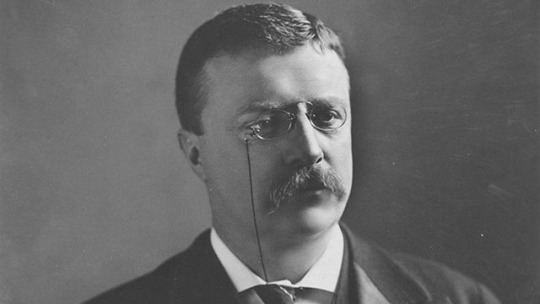
THEODORE 'TEDDY' ROOSEVELT ~ was the 26th President of the United States from 1901 to 1909. The youngest man ever to be elected President at age 42, he was a statesman, conservationist, and soldier. The action of “Lucy Wins A Racehorse” (1958) is set at the now defunct Roosevelt Raceway on Long Island. The raceway is named after the village of Roosevelt, which was named for him.
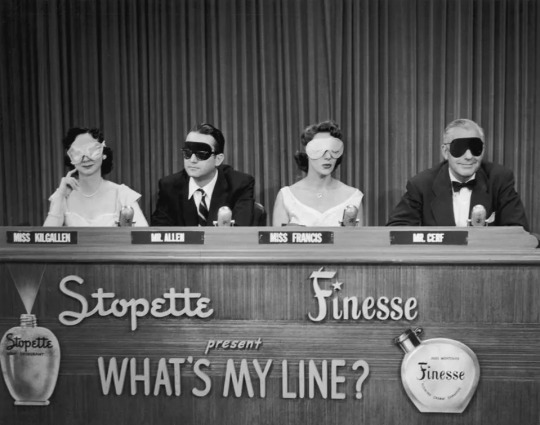
Bob Hope mentions Stopette, an underarm deodorant sold from 1941 until 1956. It was a longtime sponsor of the CBS game show "What's My Line?". Lucille Ball made six appearances on the show, one alongside Bob Hope. Time Magazine called Stopette "the best-selling deodorant of the early 1950s"

After a joke about being pelted with tomatoes, Bob Hope mentions Red Skelton, a comic actor who appeared with him in 17 film and television projects, six of which also included Lucille Ball. Skelton appeared as himself on "The Lucy-Desi Comedy Hour" in 1959.

Hope mentions Jergens Lotion, a product marketed by the Andrew Jergens Company, founded in 1882 in Cincinatti, Ohio.

Bing Crosby is winkingly mentioned by Bob Hope. Hope and Crosby were screen partners, filming seven 'Road' pictures between 1940 and 1962.

The Act One commercial for bath size Lux Soap refers to the RKO film His Kind of Woman, starring Robert Mitchum and Jane Russell, who is said to be a Lux girl. The film is set in Mexico and produced by Howard Hughtes. The film wouldn't be released for 11 months after the broadcast.

Telling a dramatic story, Bob Hope mentions Lipton Tea ("They cut off our Liptons!"). During the story, Hope starts to laugh and momentarily pauses before getting back on script. Historically, Thomas Lipton started selling tea in Scotland in 1871, his name eventually becoming synonymous with the product.

Talking about poor western hospitality, Hope mentions Spade Cooley, a musician and actor from Oklahoma who found success in Hollywood. Cooley was part Cherokee Indian. His biggest hit was "Shame On You". Ten years after this broadcast, he was convicted of murdering his wife.

CART BELKNAP: "What happened to that big elephant you were riding?"
HUMPHREY: "He'd gone to Washington to get ready for '52." (Hope ad libs after audience laughs) "I never dreamed of that!"
Hope is referring to the elephant that is the symbol of the Republican party. In 1950, it was expected that Democratic President Harry S. Truman would seek a third term. Truman had become President after the death of Franklin Roosevelt and then went on to win his first full term in 1948. In 1952, America would have had a Republican in the White House since 1933. As it turned out, Truman decided not to run in 1952, despite being exempt from term limit legistlation he himself signed into law. The winner was indeed a Republican, Dwight Eisenhower.

HUMPHREY: "Water! Water! Anything that'll save my life! A packet of Chesterfields!"
Hope was a spokesperson for the cigarette. The brand was manufactured by a subsidiary of Philip-Morris, the tobacco company that sponsored "I Love Lucy" in 1951. The studio audience laughs at this ad-lib.

HUMPHREY: "I'm no Earl. I'm not even Humphrey. I'm an Arthur Tyler, an actor: AFTRA, AGVA, and SAG. And paid up!"
Hope's ad-lib refers to the performers unions American Federation of Television and Radio Artists (AFTRA), American Guild of Variety Artists (AGVA), and the Screen Actors Guild (SAG). At the time of broadcast, Ronald Reagan was president of SAG. Recently, SAG and AFTRA merged to create SAG-ATRA. Needless to say, these labor unions did not exist in 1905.

During the second act commercial break, Joan Taylor and William Keighley mention Paramount's Here Comes the Groom starring Jane Wyman and Alexis Smith, both said to be "Lux Lovely". The Frank Capra film was released September 20, 1951 and won a 1952 Oscar for Best Song: "In the Cool, Cool, Cool of the Evening." Coincidentally, Gail Bonney, who is heard in this radiocast, appears uncredited as a telephone operator in the film.
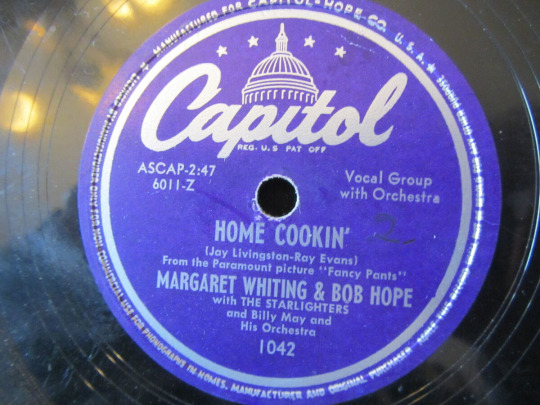
After singing "Home Cookin'" with Ball, Hope quickly quips "Thank you, Margaret." In June 1950, Hope had joined songstress Margaret Whiting and the Starlighters to release a single of the song - sans Lucy. The mention of Margaret causes the studio audience to erupt in laughter, and the actress playing Effie has to say: "Listen! I'm talkin' to you!"

HUMPHREY: "I've been practicing the royal sneer all morning. I'll soon be getting fan mail from Basil Rathbone."
Basil Rathbone was an actor best known for his portrayal of Sherlock Holmes in a series of films. In 1954, Hope and Rathbone starred together in the light comedy Casanova's Big Night. Rathbone had previously guest starred on Hope's 1941 radio show.

HUMPHREY: "The whole day on horseback! I may find a new place to put my Dr. Scholl's foot pads!"
Dr. William Mathias Scholl was born on June 22, 1882 in La Porte, Indiana. He learned about foot care and shoes thanks to his grandfather, who was a shoemaker in Germany. He founded the Dr. Scholl’s company in 1906.
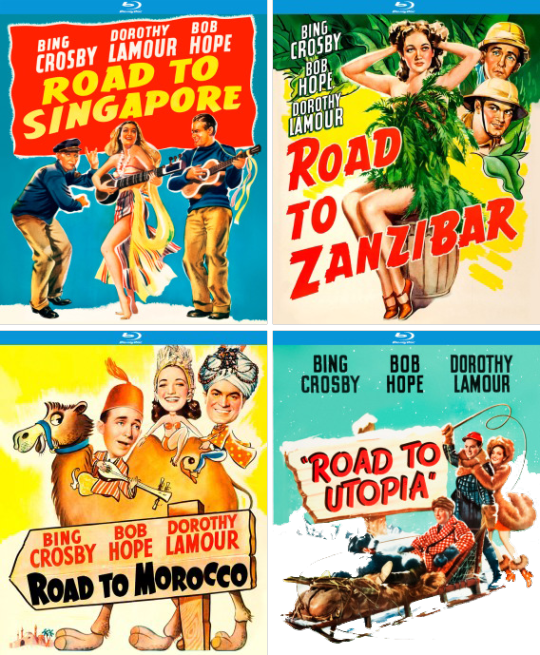
HUMPHREY: "Listen Aggie, I can't ride a horse. I can't even ride a jack ass. Even after all those road pictures we did together."
Hope is making a snide joke about Bing Crosby, who (at that point) starred with him in five "Road To..." films, most with Dorothy Lamour. Two more would follow in 1952 and 1962.

After Act Three, Libby Collins and Mr. Keighley announce a contest to identify a mystery Hollywood Lux girl. They say that her first name is June. [It was later revealed to be June Allyson.]

At the conclusion of the story, Bob Hope and Lucille Ball are briefly interviewed by Mr. Keighley. Hope mentions a contest to win a world premiere of his next film, My Favorite Spy, in the listener's hometown. The film premiered on Christmas Day 1952.

Keighley promotes next week's Lux Radio Theatre, Sunset Boulevard, starring the original film stars Gloria Swanson and William Holden, and featuring Nancy Gates.
A final commercial suggests washing stockings in Lux.
#Fancy Pants#Lucille Ball#Bob Hope#Lux Radio Theatre#1950#Radio#Spade Cooley#Jergens Lotion#Teddy Roosevelt#His Kind of Woman#Norma Varden#Lipton Tea#Bing Crosby#Red Skelton#Stopette#Chesterfield#Basil Rathbone#Lux Soap#June Allyson#Sunset Boulevard#My Favorite Spy
4 notes
·
View notes
Text
youtube
Great American Traffic Jam
All 1 hour and 58 minutes of it. Who isn’t in this movie?? Desi arnaz jr, rue mcclanahan, Lisa Hartman, the guy from wkrp, what’s his name?? Al from Happy Days, Ed McMahon, cousin Oliver
I haven’t even watched more than 5 minutes and I already blame you @10paper20heart for my new nonsense
2 notes
·
View notes
Photo



#Ecoquest#the search for cetus#1991#Sierra Online#Gano Haine#Jane Jensen#Terrence C. Falls#Desie Hartman#Michael Hutchison#Dennis Lewis#Maurice Morgan#John Shroades#Adventure Games
26 notes
·
View notes
Text
creator appreciation tag
tagged by the incredible @someawkwardprose. cucumber jenkins, you really deserve to be appreciated. also tagged by @violetmessages, my desi half to this fandom. i’ve never had a desi other half in fandom. i love it and them. (and you too, cj.)
RULES: It’s time to love yourselves! choose your 5 (ish) favorite works you created in the past year (fics, art, edits, etc.) and link them below to reflect on the amazing things you brought into the world in 2020. Tag as many writers/artists/etc. as you want (fan or original) so we can spread the love and link each other to awesome works.
this year! i wrote and published! the most fic i ever had. i published roughly 304K on ao3 this year, and all but maybe 10K of it was Torchwood or a Torchwood crossover dksaksdkssks. Soooooo, uhhhhhhh. picking 5 fics, you say? dajjakkasskj
fool me once, fool me twice (torchwood | janto | complete | 52K | E)
my most popular and longest fic ever, my pride and joy, my masterpiece, the only fic that maybe gives me writing rights besides my novel. This fic started from a somewhat cracky prompt by @heathridgemanor (aka the lovely ains) but blossomed into a somewhat beautiful journey about jack and ianto’s reunion 3000 years in the future. not only that, but it spawned several, several sequels and spinoffs (and many more to go) and this whole big beautiful universe and cemented the lives of captain jack as my favorite big finish audios. plus, so many of my friends love it, and that makes me feel validated.
sing me like a choir (torchwood | janto | wip | 20K+ | E)
ah, smlc, my one actual wip rn. older torchwood director ianto jones meets younger time agent javic thane, eventually to tie into month 25. this truly is one of my favorite fics rn. i just think some of my writing here peaked. plus, it might end up being my longest fic, and the idea itself is older than fool me once, even if only by a month. i’ve written roughly half of the fic right now, with 12 more chapters to go. i’m so excited. plus, i just think that the ending is brilliant if sad and will blow your mind. @violetmessages and @flamingbluepanda and kai agree!
the world is at my feet (i am standing on the ceiling) (torchwood | janto | complete | 21K | T)
i can’t say much about this fic without it being a total spoiler, but let’s just say that it follows a mid-s2 ianto discovering just how much he and his memory suffered at tw1 at the hands of yvonne hartman and going on a little angsty journey of self-discovery. this one is not truly a happy ending and is kinda twisty and philosophical, and i lowkey wished more people would read it. i think this one is brilliant and shocked me when i came up with it. plus, it just amuses me how so many people miscontrued the open ending to be happier than it actually was meant to be.
never seen a mouth i would kill to kiss (torchwood | janto | complete | 12K | E)
would you believe that this fic was actually a birthday fic for myself? it was a balance between the older weirdly angsty livejournal janto fics from a decade ago that i got really into reading at a point and a more reasonable character analysis of jack and ianto. plus, i wanted no gwen bashing whatsoever. janto relationship angst? yeah, but no, gwen will not be a cause, because she never was. still this is like super angsty, but i like it. it’s a testament to me writing different kinds of fic and not just the same genre over and over again. plus, it’s me writing canonical fic. or fic that could fit into canon.
Mutually Assured Uncooperation (torchwood and agents of shield | complete | 31K | T)
the comfort show you’ve watched since you were thirteen is ending in 2020 and plus aligns closely with this show you’ve gotten really into for the last few months? write a crossover. this was an idea i’d had brewing for a while since october 2019 (when i watched torchwood) because of the parallels between both shows, but i finally started writing it in feburary 2020. i wrote some scenes in class. little did i know, roughly a few weeks later, i would be leaving my campus and not returning since. ouch. but anyways, this was sort of my tribute to agents of shield, which means so much to me. and although i have written so much torchwood fic since then and my writing and characterization has improved, this fic is still special to me.
honorable mention:
like hope, love abides (torchwood | janto | 3.3K | Gen)
the shortest fic on this list and also my first actual torchwood fic. this was all written in the spur of a moment on a day in march. never stopped writing fic since. i like this fic, even if i don’t get why everyone loves it. not a bad fic but still important to be acknowledged, i guess?
tagging: @jaune-chat, @ultraviolet-eucatastrophe, @thirteeninafez, @flamingbluepanda, @shejustcalledmeafish, and anyone else who wants to do this!
8 notes
·
View notes
Text
How All in the Family Changed the TV Landscape
https://ift.tt/eA8V8J
All in the Family is roundly considered a touchstone for television achievement now, but when it debuted 50 years ago, even the network carrying it hoped it would fizzle quickly and unnoticed. CBS put an army of operators at phone lines expecting a barrage of complaints from offended middle Americans demanding its cancellation. Those calls didn’t come. What came was a deluge of support from people hoping this mid-season replacement was a permanent addition to the network’s lineup. The premiere episode contained a considerable list of “television firsts.” One of these rarities continues to remain scarce on network TV: creator Norman Lear trusted the intelligence of the viewing audience. To celebrate All in the Family’s 50th anniversary, we look back at its journey from conception to broadcast, and how it continues to influence and inform entertainment and society today.
Actor Carroll O’Connor, who was a large part of the creative process of the series, consistently maintains he took the now-iconic role of Archie Bunker because All in the Family was a satire, not a sitcom. It was funny, but it wasn’t a lampoon. It was grounded in the most serious of realities, more than the generation gap which it openly showcased, but in the schism between progressive and conservative thinking. The divide goes beyond party, and is not delineated by age, wealth, or even class. The Bunkers were working class. The middle-aged bigot chomping on the cigar was played by an outspoken liberal who took the art of acting very seriously. The audience cared deeply, and laughed loudly, because they were never pandered to. They were as respected as the authenticity of the series characters’ parodies.
Even the laughs were genuine. All in the Family was the first major American series to be videotaped in front of a live audience. There was never a canned laugh added, even in the last season when reactions were captured by an audience viewing pre-taped episodes. Up to this time, sitcoms were taped without audiences in single-camera format and the laugh track was added later. Mary Tyler Moore shot live on film, but videotape helped give All in the Family the look of early live television, like the original live broadcasts of The Honeymooners. Lear wanted to shoot the series in black and white, the same as the British series, Till Death Us Do Part, it was based on. He settled for keeping the soundstage neutral, implying the sepia tones of an old family photograph album. The Astoria, Queens, row house living room was supposed to look comfortable but worn, old-fashioned and retrograde, mirroring Archie’s attitudes: A displaced white hourly wage earner left behind by the social upheavals of the 1960s and 1970s.
“I think they invented good weather around 1940.”
American sitcoms began shortly after World War II, and primarily focused on the upper-middle class white families of Father Knows Best, Leave It to Beaver, and The Adventures of Ozzie and Harriet. I Love Lucy’s Ricky Ricardo, played by Cuban-American Desi Arnaz, ran a successful nightclub. The Honeymooners was a standout because Jackie Gleason’s Ralph Kramden was a bus driver from Bensonhurst (the actual address on that show, 328 Chauncey Street, is in the Bedford–Stuyvesant section of Brooklyn). American TV had little use for the working class until the 1970s. They’d only paid frightened lip service to the fights for civil rights and the women’s liberation movements, and when the postwar economy had to be divided to meet with more equalized opportunities there was no one to break it down in easy terms. The charitable and likable Flying Nun didn’t have the answer hidden under her cornette. It wasn’t even on the docket in Nancy, a 1970 sitcom about a first daughter. The first working family on TV competing in the new job market was the Bunkers, and they had something to say about the new competition.
Social commentary wasn’t new on television. Shows like The Twilight Zone and Star Trek routinely explored contemporary issues, including racism, corporate greed, and the military action in Vietnam, through the lens of fantasy and science fiction. The war and other unrest were coming into the people’s living rooms every night on the evening news. The times they were a-changing, but television answered to sponsors who feared offending consumers.
Ah, but British TV, that’s where the action was. Lear read about a show called Till Death Us Do Part, a BBC1 television sitcom that aired from 1965 to 1975. Created by Johnny Speight, the show set its sights on a working-class East End family, spoofing the relationship between reactionary white head of the house Alf Garnett (Warren Mitchell), his wife Else (Dandy Nichols), daughter Rita (Una Stubbs), and her husband Mike Rawlins (Anthony Booth), a socialist from Liverpool. Lear recognized the relationship he had with his own father between the lines.
CBS wanted to buy the rights to the British show as a star vehicle for Gleason, Lear beat out CBS for the rights and personalized it. One of the reasons All in the Family works so well is because Lear wasn’t just putting a representative American family on the screen, he was putting his own family up there.
“If It’s Too Hot in The Kitchen, Stay Away from The Cook.”
Archie Bunker dubbed his son-in-law, Michael Stivic, played by Rob Reiner, a “Meathead, dead from the neck up.” This was the same dubious endearment Lear’s father Herman called him. The same man who routinely commanded Lear’s mother to “stifle herself.” Lear’s mother accused her husband, a “rascal” who was sent to jail for selling fake bonds of being “the laziest white man I ever saw,” according to his memoir Even This I Get to Experience All three lines made it into all three of the pilots taped for All In the Family. When Lear’s father got out of prison after a three-year stretch, the young budding writer sat through constant, heated, family discussions. “I used to sit at the kitchen table and I would score their arguments,” Lear remembers in his memoir. “I would give her points for this, him points for that, as a way of coping with it.”
All in the Family, season 1, episode 1, provides an almost greatest hits package of these terse and tense exchanges, which also taught Lear not to back away from the fray. He served as a radio operator and gunner in the U.S. Air Force during World War II, earning an Air Medal with four Oak Leaf Clusters after flying 52 combat missions, and being among the crew members featured in the books Crew Umbriag and 772nd Bomb Squadron: The Men, The Memories. Lear partnered with Ed Simmons to write sketches for Jerry Lewis and Dean Martin’s first five appearances on the Colgate Comedy Hour in 1950. They remained as the head writers for three years. They also wrote for The Ford Star Revue, The George Gobel Show, and the comedy team Rowan and Martin, who would later headline Laugh-In.
Lear went solo to write opening monologues for The Tennessee Ernie Ford Show, and produce NBC’s sitcom The Martha Raye Show, before creating his first series in 1959, the western The Deputy, which starred Henry Fonda. To get Frank Sinatra to read Lear’s screenplay for the 1963 film Come Blow Your Horn, Lear went on a protracted aerial assault. Over the course of weeks, he had the script delivered while planes with banners flew over Sinatra’s home, or accompanied by a toy brass band or a gaggle of hens. Lear even assembled a “reading den” in Ol’ Blue Eyes’ driveway, complete with smoking jacket, an ashtray and a pipe, an easy chair, ottoman, lamp, and the Jackie Gleason Music to Read By album playing on a portable phonograph. After weeks of missed opportunities, Lear remembers Sinatra finally read the script and “bawled the shit out of me for not getting it to him sooner.”
The creative perseverance Lear showed just to get the right person for the right part is indicative of the lengths Lear would go for creative excellence. He would continue to fight for artistic integrity, transforming prime time comedy with shows like Good Times, One Day at a Time, and the first late-night soap opera Mary Hartman, Mary Hartman. He brought legendary blue comedian Redd Foxx into homes with Sanford and Son, also based on a British sitcom, Steptoe and Son, which starred Harry H. Corbett and Wilfrid Brambell, best known for playing Paul McCartney’s grand-dad in A Hard Day’s Night. But before he could do these, and the successful and progressive All in the Family spinoffs The Jeffersons and Maude, he had to face battles, big and small, over the reluctantly changing face of television.
“Patience is a Virgin”
After Lear beat CBS to the rights to adapt Till Death Us Do Part he offered the show to ABC. When it was being developed for the television studio, the family in the original pilot were named the Justices, and the series was titled “Justice for All,” according to a 1991 “All in the Family 20th Anniversary Special.” They considered future Happy Days dad Tom Bosley, and acclaimed character actor Jack Warden for the lead part, before offering the role to Mickey Rooney. According to Even This I Get to Experience, Lear’s pitch to the veteran actor got to the words “You play a bigot” before Rooney stopped him. “Norm, they’re going to kill you, shoot you dead in the streets,” the Hollywood icon warned, asking if Lear might have a series about a blind detective with a big dog somewhere in the works.
Taped in New York on Sept. 3, 1968, the first pilot starred O’Connor and Jean Stapleton as Archie and Edith Justice. Stapleton, a stage-trained character actor who first worked as a stock player in 1941, was a consistent supporting player for playwright Horton Foote. Stapleton originated the role of Mrs. Strakosh in the 1964 Broadway production of Funny Girl, which starred Barbra Streisand. Lear considered her after seeing her performance in Damn Yankees. She’d made guest appearances on TV series like Dr. Kildare and The Defenders.
O’Connor was born in Manhattan but grew up in Queens, the same borough as the Bunker household with the external living room window which wasn’t visible from the interior. O’Connor acted steadily in theaters in Dublin, Ireland, and New York until director Burgess Meredith, assisted by The Addams Family’s John Astin, cast him in the Broadway adaptation of James Joyce’s novel Ulysses. O’Connor had roles in major motion pictures, including Lonely Are the Brave (1962), Cleopatra (1963), Point Blank (1967), The Devil’s Brigade (1968), Death of a Gunfighter (1969), Marlowe (1969), and Kelly’s Heroes (1970). O’Connor appeared on television series like Gunsmoke, Bonanza, The Fugitive, The Wild Wild West, The Outer Limits, The Man from U.N.C.L.E., I Spy, That Girl, and Voyage to the Bottom of the Sea. He’d guest starred as a villain in a season 1 episode of Mission Impossible, and was up for the parts the Skipper on Gilligan’s Island and Dr. Smith on Lost in Space.
The first pilot also starred Kelly Jean Peters as Gloria and Tim McIntire as her husband Richard. ABC liked it enough to fund a second pilot, “Those Were the Days,” which shot in Los Angeles on Feb. 10, 1969. Richard was played by Chip Oliver, and Gloria Justice was played by Candice Azzara, who would go on to play Rodney Dangerfield’s wife in Easy Money, and make numerous, memorable guest appearances on Barney Miller. D’Urville Martin played Lionel Jefferson in both pilots. ABC cancelled it after one episode, worried about a show with a foul-mouthed, bigoted character as the lead.
CBS, which was trying to veer away from rural shows like Mayberry R.F.D., The Beverly Hillbillies, Petticoat Junction and Green Acres, bought the rights to the urban comedy and renamed it All in the Family. When Gleason’s contract to CBS ran out, Lear was allowed to keep O’Connor on as the main character.
Sally Struthers was one of the young actors featured in Five Easy Pieces, the 1970 counterculture classic starring Jack Nicholson. She’d also recently finished shooting a memorable part in the 1972 Steve McQueen hit The Getaway. Struthers had just been fired from The Tim Conway Comedy Hour because executives thought she made the show look cheap, which was her job. The premise of the show was it was so low-budget it could only afford one musician, who had to hum the theme song because they couldn’t afford an instrument, and one dancer, as opposed to a line of dancers like they had on The Jackie Gleason Show. Lear noticed her as a dancer on The Smothers Brothers Comedy Hour, a counterculture variety show which Rob Reiner wrote for with Steve Martin as a writing partner. Reiner’s then-fiancée, the director Penny Marshall, was also up for the role of Gloria, but in an interview for The Television Academy, Reiner recalls that, while Marshall could pass as Stapleton’s daughter, Struthers was obviously the one who looked like Archie’s “little girl.”
Reiner, the son of comedy legend Carl Reiner, was discovered in a guest acting role on the Andy Griffith vehicle series Headmaster, a show he wrote for, but had also played bit roles in Batman, The Andy Griffith Show, Room 222, Gomer Pyle, U.S.M.C., The Beverly Hillbillies and The Odd Couple. Reportedly, Richard Dreyfuss campaigned for the role of Michael, and Harrison Ford turned it down. Mike Evans was cast as Lionel Jefferson, the Bunkers’ young Black next-door neighbor who sugar-coated nonviolent protests with subtle and subversive twists on “giving people what they want.”
“We’re just sweeping dirty dishes under the rug.”
The very first episode tackled multiple issues right away. It discussed atheism, with Michael and Gloria explaining they have found no evidence of god. The family dissects affirmative action, with Archie asserting everyone has an equal chance to advance if they “hustle for it like I done.” He says he didn’t have millions of people marching for him to get his job, like Black Americans. “His uncle got it for him,” Edith explains, with an off-the-cuff delivery exemplifying why Stapleton is one of the all-time great comic character actors. The family argues socialism, anti-Semitism, sausage links and sausage patties. The generation gap widens as Archie wonders why men’s hair is now down to there, while Gloria’s skirt got so high “all the mystery disappears” when she sits down.
All in the Family would continue to deal with taboo topics like the gay rights movement, divorce, breast cancer, and rape. Future episodes would question why presidential campaign funds are unequal, how tax breaks for corporations kill the middle class, and weigh the personal price of serving in an unpopular war as opposed to dodging the draft. When Archie goes to a female doctor for emergency surgery a few seasons in, All in the Family points out she is most certainly paid less than a male doctor. When skyjackings were a persistent domestic threat in the 1970s, Archie suggested airlines should “arm the passengers.” It is very prescient of the NRA’s suggestion of arming teachers to combat school shootings.
But the first showdown between Lear and the network was fought for the sexual revolution. The first episode’s action begins when Edith and Archie come home early from church and interrupt Michael and Gloria as they’re about to take advantage of having the house to themselves. Gloria’s got her legs wrapped around Michael as he is walking them toward the stairs, and the bed. “At 11:10 on a Sunday,” Archie wants to know as he makes himself known. According to Lear’s memoir, CBS President William Paley objected, saying the line suggested sex. “And the network wants that out even though they’re married–I mean, it was plain silly,” he writes. “My script could have lived without the line, but somehow I understood that if I give on that moment, I’m going to give on silly things forever. So, I had to have that showdown.”
The standoff continued until 25 minutes before air time. CBS broadcast the episode, but put a disclaimer before the opening credits rolled, which Reiner later described as saying “Nothing you’re about to see has anything that we want to have anything to do with. As far as we’re concerned, if you don’t watch the next half hour, it’s okay with us.” Lear knew, with what he was doing, this was going to be the first of many battles, because this was the first show of its kind. Television families didn’t even flush toilets, much less bring unmentionables to the table. “The biggest problem a family might face would have been that the roast was ruined when the boss was coming over to dinner,” Lear writes. “There were no women or their problems in American life on television. There were no health issues. There were no abortions. There were no economic problems. The worst thing that could happen was the roast would be ruined. I realized that was a giant statement — that we weren’t making any statements.”
“What I say ain’t got nothing to do with what I think.”
Politicians and pundits worried about how the series might affect racial relations. The country had experienced inner city riots, battle lines were drawn over school desegregation, busing children to schools was met with violent resistance. Did All In the Family undermine bigotry or reinforce racism? Were people laughing at Archie or with him? Was it okay to like Archie more than Mike?
Lear believed humor would be cathartic, eroding bigotry. Bigots found a relief valve. Lear always insisted Archie was a satirically exaggerated parody to make racism and sexism look foolish. Liberals protested the character came across as a “loveable bigot,” because satire only works if the audience is in on the joke. Bigoted viewers didn’t see the show as satire. They identified with Archie and saw nothing wrong with ethnic slurs. Mike and Gloria come off like preachy, bleeding-heart liberal, hippie leeches. Lionel handled Archie better than Michael did.
O’Connor humanized Archie as an old-fashioned guy trying to make sense of a rapidly changing world. Bunker gave bigotry a human face and, because he hated everyone, he was written off as an “equal-opportunity bigot.” Not quite a defensible title. Archie was the most liked character on the show, and the most disliked. Most people saw him as a likable loser, so identifiable he was able to change attitudes. In a 1972 interview, O’Connor explained white fans would “tell me, ‘Archie was my father; Archie was my uncle.’ It is always was, was, was. It’s not now. I have an impression that most white people are, in some halting way, trying to reach out, or they’re thinking about it.” It sometimes worked against O’Connor the activist, however. When he backed New York Mayor John Lindsay’s 1972 anti-war nomination for the Democratic presidential nomination, Archie Bunker’s shadow distanced progressives.
Archie was relatable beyond his bigotry. He spoke to the anxieties of working- and middle-class families. Archie was a dock worker in the Corona section of Queens, who had to drive a cab as a second job, with little hope of upward mobility. He didn’t get political correctness. The character’s ideological quips were transformed into the bestselling paperback mock manifesto The Wit and Wisdom of Archie Bunker. White conservative viewers bought “Archie for President” buttons.
“If you call me Cute one more time, I swear I’ll open a vein.”
As cannot be overstated, All in the Family set many precedents, both socially and artistically. The Bunker family is an icon on many levels, Archie and Edith’s chairs are at the Smithsonian. But Archie Bunker is also the Mother Courage of TV. The antithesis of the bland sitcom characters of the time, he also wasn’t the character we hated to love, or loved to hate. Archie was the first character we weren’t supposed to like, but couldn’t help it. This phenomenon continues. The next TV character to take on the iconic mantle was probably Louis De Palma on Taxi. Audiences should have wanted to take a lug wrench to his head, but Danny De Vito brought such a diverse range of rage and vulnerability to that part it was named TV Guide’s most beloved character for years.
We shouldn’t like Walter White, especially when he doffs that pretentious Heisenberg hat, on Breaking Bad. And let’s face it, Slipping Jimmy on Better Call Saul isn’t really the kind of guy you want to leave alone in your living room while you grab a drink. Families across the United States and abroad sat down to an Italian-style family dinner with Tony Soprano and The Sopranos every Sunday night. But on Monday mornings, most of us would have ducked him, especially if we owed him money. Even the advanced model of the Terminator guy was scared of Tony.
The best example of this is South Park’s Eric Cartman. While we don’t know who his father is on the series, he’s got Bunker DNA all over him. He’s even gotten into squabbles with Sally Struthers and Rob Reiner. This wasn’t lost on Lear, who contacted creators Trey Parker and Matt Stone to say he loved the show in 2003. Lear wound up writing for South Park’s seventh season. “They invited me to a party and we’re partying,” Lear told USA Today at the time. “There’s no way to overstate the kick of being welcomed by this group.”
“I hate entertainment. Entertainment is a thing of the past, now we got television.”
Television can educate as much as it wants to entertain, and All in the Family taught the viewing audience a whole new vocabulary. The casual epithets thrown on the show were unheard of in broadcast programming, no matter how commonplace they might have been in the homes of the people watching. When Sammy Davis Jr. comes to Bunker house in the first season, every ethnic and racial slur ever thrown is exchanged. In another first season episode, and both the unaired pilots, Archie breaks down the curse word “Goddamn.” But a large segment of the more socially conservative, and religious, audience thought All in the Family said whatever they wanted just because they could get away with it.
All in the Family debuted to low viewership, but rose to be ranked number one in the Nielsen ratings for five years. The show undermined the perception of the homogeneous middle-class demographic allowing shows like M*A*S*H to comment on contemporary events.
All in the Family represented the changing American neighborhood. The show opened the door for the working poor to join situation comedies as much as when the Bunkers welcomed Lionel, Louise (Isabel Sanford), and George Jefferson (Sherman Hemsley) when they moved into Archie’s neighborhood. Lear reportedly was challenged by the Black Panther Party to expand the range of black characters on his shows. He took the challenge seriously and added subversive humor. Sanford and Son was set in a junkyard in Watts. Foxx’s Fred Sanford rebelled against the middle-class aspirations of his son, Lamont (Demond Wilson). Good Times was set in the projects of Chicago, and took on issues like street gangs, evictions and poor public schools.
cnx.cmd.push(function() { cnx({ playerId: "106e33c0-3911-473c-b599-b1426db57530", }).render("0270c398a82f44f49c23c16122516796"); });
Married With Children, The Simpsons, and King of the Hill continued to explore the comic possibilities of working class drama. Mary Richards on The Mary Tyler Moore Show was a successful, upwardly mobile television producer. Working-class women were represented on sitcoms like Alice, but didn’t have a central voice until 1988 when Roseanne debuted on ABC, and Roseanne Barr ushered in her brand of proletarian feminism. All in the Family’s legacy includes Black-ish, as creator Kenya Barris continues to mine serious and controversial subject matter for cathartic and educational laughter. Tim Allen covets the conservative crown, and is currently the Last Man Standing in for Archie. But as reality gets more exaggerated than any satire can capture, All in the Family remains and retains its most authentic achievement.
The post How All in the Family Changed the TV Landscape appeared first on Den of Geek.
from Den of Geek https://ift.tt/2LIbREk
2 notes
·
View notes
Photo
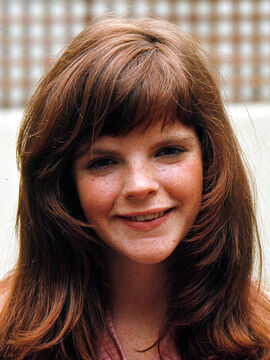
Famous Muses & Groupies in Rock Music Pt. 50
GROUPIE: Debralee Scott
Debralee was born on April 2nd, 1953 in Elizabeth, NJ, where she was raised until her family moved Stroudsburg, PA when she was a teenager. Throughout high school, Debralee was a cheerleader. Her siblings are film producer Scott Bushnell and talent agent Jeri Scott. In the early 1970s, DL’s acting career began with minor roles in movie classics like Don Siegel’s Dirty Harry (1971), Michael Ritchie’s The Candidate (1972) and George Lucas’ American Graffiti (1973). By 1975, she crossed over to television with the recurring part of ‘Hotsy’ on the hit sitcom “Welcome Back, Kotter” (1975-78); and became more famous for playing the on-screen sisters of the title characters on the sitcoms “Mary Hartman, Mary Hartman” (1976-77) and “Angie” (1979-80). At the same time she was playing supporting roles on TV, Debralee had found her primary niche was participating as a regular panelist on popular game shows such as “Match Game” (1975-80), “Password” (1979-81) and “Family Feud” (1979). She retired from showbusiness in 1989, with her final two projects being the popular comedy Police Academy (1984) and the sequel Police Academy 3: Back in Training (1986).
In Debralee’s personal life she had her share of celebrity boyfriends. In 1974, she dated Oscar winning actor Richard Dreyfuss a year after they met on the set of American Graffiti; and then she was in a relationship with Star Trek star Jonathan Frakes from 1980-85. Previously in the mid-‘70s, DL went through a drummer phase and briefly dated both Beatle Ringo Starr and Monkee Micky Dolenz during their Hollywood Vampires days. Supposedly the TV starlet revealed she and Ringo broke up during an appearance on “The Merv Griffin Show” where Merv introduced her as ‘Ringo’s girlfriend,’ to which she quickly responded “Not anymore!” off camera. (Unfortunately, there doesn’t appear to be any clips of her “MGS” appearances online.) Not long after that, DL had flings with Desi Arnaz, Jr. and guitarist Neal Schon of Journey. One of her closest friends was model and fellow rock girlfriend Lorelei Shellist too.
Two decades later, Debralee’s then fiancé, PANYNJ officer John Levi, became a fatal victim of the World Trade Center attacks on September 11th, 2001. The actress is said to have been devastated by John’s death and never fully accepted it according to her sister Jeri. After the tragedy, Debralee moved to Florida with Jeri in 2005 and had developed cirrhosis of the liver from a drinking disorder. She died in her sleep only a couple months later at age 52 after experiencing a short coma. :(
#debralee scott#groupies#match game#welcome back kotter#ringo starr#micky dolenz#jeez this is another sad one :/#it was hard to find a pic where she doesn't look like a 12 yr old ngl...#musesandgroupiesseries
22 notes
·
View notes
Text
Blackhawks Player Nicknames (according to Second City Hockey.com) [03\23\2017]
Andrew Desjardins #11 (currently free agent)
Desi, Dijon, Colonel Mustard. Not Ben Smith, but was traded for him. Depth forward.
Artem Anisimov #15
Arty, Arty Party, Ani. Our long-awaited 2C. Friend of Annette Frontpresence.
Artemi Panarin #72 (now with Columbus Blue Jackets)
Pan, Bread Man, Panera Bread, Snake.
No one is quite sure how to spell his first name. Undrafted, caused much salt among fans of other teams when he won the Calder Trophy for best NHL rookie at the age of 24.
Brent Seabrook #7
Seabs, Biscuit (a reference to Seabiscuit), The Captain Whisperer (after he stepped into the box to comfort Toews after his third crappy penalty in the process of losing to Detroit in Game 4 in the 2013 playoffs). Nacho Seabre (admitted weakness for nachos and pizza).
Affectionately known as "(my) Seabsie boy" to his teammates. If he looks slow on the ice it's probably because he ate too many nachos. Gave his son Carter the middle name of "Seven,” but alleges it was his wife's idea.
Brian Campbell #51 (now retired)
Soupy (like Campbell's soup, generic nickname for anyone with this last name), Soup Dogg, Ginger (the hair), 51 Phantom.
Corey Crawford #50
Crow, Watcher (the Watcher on the Wall from Game of Thrones), Crawful (generally used sarcastically), Crawsome. As this is Chicago, the victim of a perpetual goalie controversy despite performing as an elite NHL starter for the last four seasons.
His glove hand/blocker/five-hole sucks and we'll never win anything with him in net. He's a fucking beauty (quote from his Cup parade speech where he was totally non-sober and dropped two f-bombs).
Dennis Rasmussen #70 (now with Anaheim Ducks)
Moose, Raz. Swedish defensive forward.
Duncan Keith #2
Duncs, Jigsaw (reference to character from Saw, because his teammates claim he's kind of psycho scary and methodical), Teeth, in reference to his heroism in the 2010 WCF, losing 7 teeth in Game 4 and only missing a few shifts, Bambi because of how fast he skates (he has crazy good conditioning and routinely has the highest TOI of the team).
Inspired the phrase 'Chicago Runs on Duncan'.
John Hayden #40
Hayds, Hayder.
Johnny Oduya #27
Odie, Oh do ya? eg, "I think his last name has a lot of pun-potential." "Oh, do ya?"
Jeremy Roenick is jealous now because Oduya's wearing his old number, but Roenick thinks it should be retired.
Jonathan Toews #19
Jonny, Tazer, Captain, Best Captain, Captain Marvel (he wears the C and he's the best/marvelous, obviously), Captain Serious (because he is one serious motherfucker, although glimpses of him off-guard on camera suggest his off-ice personality has a large component of goofy weirdo), Captain Lardass (from an angry Twitter comment), Captain Seriously [Adjective]. Draws comparisons to Grumpy Cat (Kaner's feline equivalent is Lil Bub) and to a hockeybot who does not understand human emotions, due to his hilariously incongruous facial expressions in any given situation (see also Toewsface)
Jordin Tootoo #22
Toots, Two two and other such puns.
Depth forward, here for the grit.
Marcus Kruger #16 (now with Carolina Hurricanes)
Krugs, Frogger (because he likes to play in traffic, gets crunched a lot, yet has many lives), Freddy (his team nickname, from Nightmare on Elm Street), The Plan All Along (according to Stan Bowman, his call-up from Europe in late 2011 was "all part of the plan"). "Kruger is mashed, gets away with the puck" - commentary from Foley, and the story of his life.
As Tracey Myers once put it, his tombstone will read, "Kruger took a hit to make a play.”
Marian Hossa #81
Hoss, Panda (originally sad panda, a name acquired during the playoffs while he playing for Detroit, shortened to Panda when he joined the Hawks), Gossamer (from autocorrect), HE IS MARIAN HOSSA AND YOU ARE NOT, because few can do what he does. Likes KitKats, as they are "good for you!"
He is a hockey demigod, a fact acknowledged by everyone including the official twitter. His name may be substituted for "God" in common phrases, eg "Oh my Hossa!"
Michal Kempny #6
Lemony, via autocorrect. Third pair dman.
Michal Rozsival #32
Rozi, Rozsi. Elderly depth dman, looks like an elf.
Will still be signing 1-year deals with the Hawks when Toews and Kane have retired.
Nick Schmaltz #8
KFC (Schmaltz means chicken fat), Biggy Schmaltz.
Playmaking center drafted from UND (this worked out well last time they tried it), snatched from under the noses of the St Louis Blues when Stan traded up in the draft. Brother Jordan is a Blues prospect. Chicago Mission alum.
Niklas Hjalmarsson #4 (now with Arizona Coyotes)
Hjammer, Hammer, Meatball (because he was the original Swede Hawk), Jelly (his AHL nickname), Super Nintendo Chalmers (Simpsons reference), Jarbles (the LA announcers clearly mislaid the Swedish names cheatsheet in the WCF and called him Jarbleson), Swedish Viking (description by Jonny Oduya).
His leg bones have been upgraded to titanium, judging by the number of shots he blocks.
Patrick Kane #88
Kaner, Lazy, Showtime, wee blond ninja, Black Magic for what he does with the puck, from a quote by former SCHer gmh - "...but the devil lives inside this kid, I swear it. It rises out of him in a mist, this baby-faced defiant wrathful version of Pat Kane, escapes his bodily confines to perform satanic miracles all over the offensive zone. The only thing more fearsome than that assist was the keep-in preceding it. The only thing more unholy than his face is his black magic."
Richard Panik #14
Visa (due to visa issues when joining the team), Panik at the UC!, or Disco for obvious reasons. His name is actually pronounced PAH-neek but hockey never lets a bad pun go to waste.
Ryan Hartman #38
Hartzy. Giving Seabrook a run for his money for "Best Hair" on the team. Another Illinois native/Chicago Mission kid.
Scott Darling #33 (now with Carolina Hurricanes)
Oh My, Clem - from the song "Oh my darling Clementine.”
A native of Lemont (or maybe Aurora according to one confused commentator), is very tall.
Tanner Kero #67
Depth center.
Tomas Jurco #13
Part of Stan's secret plan to collect all the Slovaks in the NHL in case any of them grow up into Hossas.
Trevor van Riemsdyk #57 (now with Carolina Hurricanes)
TVR, Smiley van Smiley due to his happy demeanor in interviews. Brother of James/JVR.
Prospects/IceHogs
Tyler Motte #64 (now with Columbus Blue Jackets)
Apple Sauce, Motter.
Vinnie Hinostroza #48
Cousin Vinnie.
Bartlett native and ex-Chicago Mission kid.
Brandon Mashinter #53
Mash, Manshitter
Here to maintain the quota of players called Brandon and occasionally punch things.
To see the rest of the article, go to:
https://www.secondcityhockey.com/2017/3/23/13762402/guide-nicknames-jargon-slang-blackhawks-fans
12 notes
·
View notes
Text
you know sometimes (most of the time) I struggle with the publishing my work and all the pitfalls that come with having to maintain a public presence/political stance etc etc along with the critical standards you set for yourself…but then I read that haroon moghul is back at it again with another book about his work with the shalom hartman institute and that another volume of desi diaspora poetry is being peddled and I’m like…something’s gotta change!!!!!!!!!!
3 notes
·
View notes
Text
FALL PREVIEW ‘53
September 18, 1953

On September 18, 1953, TV Guide, now a national publication, published their first Fall Preview issue. This became an annual and much anticipated tradition with the magazine. Although TV Guide national edition was only 25 issues old, Lucille Ball had already been featured on three covers and would go on to be seen on 36 more.

TV Guide (volume 1, number 25) hit news stands on September 18, 1953. It provided television listings for programs from September 18 to 24, 1953.
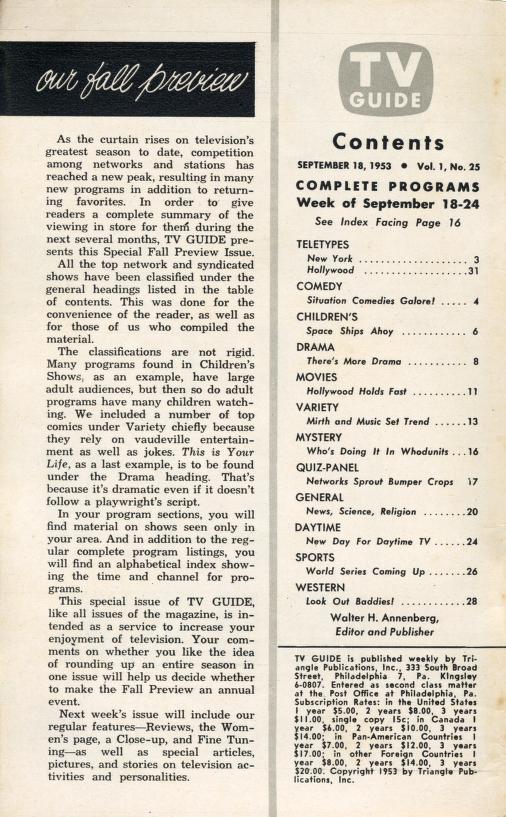
The editorial content of the issue was broken down by genre. Naturally, Lucille Ball and “I Love Lucy” headed up the “Situation Comedy” section.
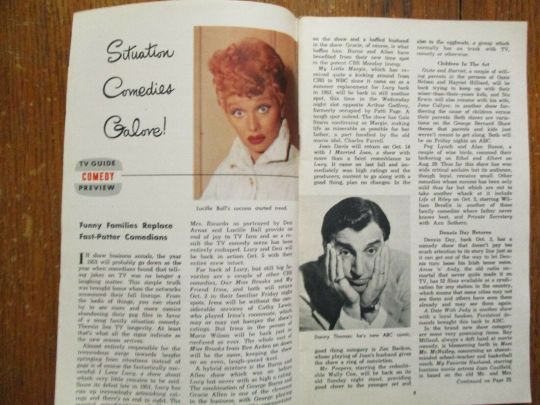
“Almost entirely responsible for laughs springing from situations instead of gags is, of course, the fantastically successful ‘I Love Lucy’, a show about which very little remains to be said. Since its debut in late 1951, ‘Lucy’ has run up increasingly astonishing ratings and there’s no end in sight. The marital misadventures of Mr. and Mrs. Ricardo as portrayed by Desi Arnaz and Lucille Ball provide no end of joy to TV fans and as a result the entire TV comedy scene has been reshaped.”

In 1953, “I Love Lucy” did not return to the airwaves until October 5th, kicking off their third season with “Ricky’s Life Story” (ILL S3;E1), an episode filmed in May 1953. T

he day before this issue hit the stands, the series filmed “Lucy and Ethel Buy the Same Dress” (ILL S3;E3), which aired on October 19, 1953. Lucy and Desi were still dealing with her being accused of being a communist a week earlier.


Although the Arnaz Family loved to get away to Hawaii, they could not have spent a month there from September 15, 1953. They filmed “Lucy and Ethel Buy The Same Dress” on September 17th and “Equal Rights” on September 24th. The TV Teletype (Hollywood) was complied by Dan Jenkins. The reporter’s name was given to the used furniture salesman played by Hans Conried in “Redecorating” in 1952.

The article on Comedy goes on to discuss returning shows like “Our Miss Brooks,” “My Friend Irma,” “My Little Margie,” “I Married Joan,” “Mr. Peepers,” “Ozzie and Harriet,” “Ethel and Albert,” “Life of Riley,” “Amos ‘n’ Andy” and “A Date With Judy.”

Comedy Newcomers for 1953...

“My Favorite Husband” based on Lucille Ball’s hit radio show. Lucy’s role is now taken by Joan Caulfield. The CBS sitcom lasted until 1955.

“Meet Mr. McNutley” aka “The Ray Milland Show.” It lasted two season on CBS.

“Life With Danny” later retitled “Make Room for Daddy” and then “The Danny Thomas Show.” The show became a juggernaut lasting until 1965 and launching several sequels and spin-offs, including “The Andy Griffith Show.” Thomas was inspired by Desi Arnaz to use a multi-camera film shoot and filmed the show at Desilu. In 1958, the series moved to CBS and did a cross-over with “The Lucy-Desi Comedy Hour” to mark the shift in networks.

“Pride of the Family” starring Paul Hartman and Fay Wray and Natalie Wood in her only regular TV series. The ABC show lasted only one season.

“Bonino” starring opera singer Ezio Pinza and Mary Wickes as his housekeeper. The comedy lasted only six episodes on NBC.

“Jamie” starring Oscar-nominated and Golden Globe-winning child actor Brandon De Wilde (Shane). ABC canceled the series two episodes into the second season because of a business dispute with its show's sponsor.
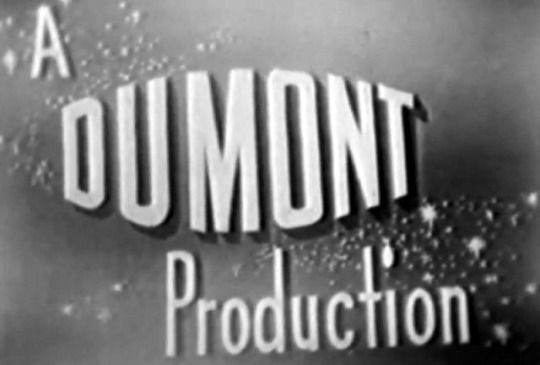
“Marge and Jeff” was a nightly 15-minute sitcom from the DuMont Television Network featuring Marge Greene (who also wrote the episodes) and Jess Cain as newlyweds living in New York City. It ran 27 episodes.
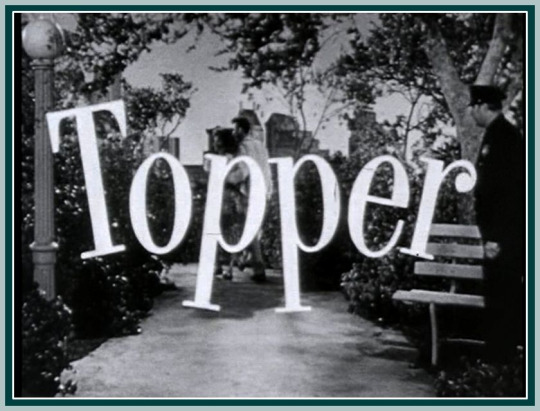
“Topper” was about an uptight banker, Cosmo Topper, and the ghosts that only he could see or hear, George and Marion Kerby. Based on the hit film of 1937, the series ran two seasons on CBS.

“Life With Father” was based on the long-running Broadway play and hit film of 1947, this sitcom debuted on CBS and lasted until July 1955. It focused on the lives of the Day family in 1880s New York. Viewers had trouble keeping track of the numerous cast changes with the children (one son was played by three different actors). Despite being seen in black and white by most viewers, this live series was actually broadcast in color beginning in September 1954, the first such show produced in Hollywood.

“Private Secretary” was a mid-season replacement that started airing in February 1953, so not technically a ‘new’ comedy. The show featured Lucy’s friend Ann Sothern as Susie McNamara, private secretary. It was filmed at General Service Studios, just like “I Love Lucy.” When the series was mired in contract disputes and reformatted as “The Ann Sothern Show,” Desilu entered the picture as producer. Interestingly, the September 20, 1953 episode concerned Susie wanting a trip to Havana, Cuba.
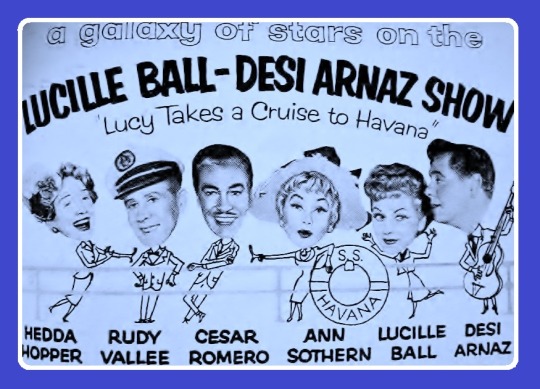
The very first episode of “The Lucy-Desi Comedy Hour” in 1957 depicted Susie MacNamara and her fellow private secretary Lucy McGillicuddy on a 1940 cruise to Havana, where Lucy meets her future husband, Ricky Ricardo! Lucy Ricardo also turned up on “The Ann Sothern Show” where Ann played Katie O’Connor. The upshot is that both Susie and Katie lived in the same world as Lucy Ricardo!

#TV Guide#1953#Fall Preview#I Love Lucy#TV#Comedy#Desi Arnaz#lucy-desi comedy hour#Ann Sothern#Private Secretary#Life With Father#Bonino#Topper#Make Room for Daddy#Danny Thomas#Ray Milland#My Favorite Husband#Dan Jenkins
5 notes
·
View notes
Text
TELEVISION ACADEMY HALL OF FAME

“The First Annual Television Academy Hall of Fame Awards”
March 4, 1984 ~ NBC
Directed by Dwight Hemion
Written by Buzz Kohan
This award's mission is to recognize "persons who have made outstanding contributions in the arts, sciences or management of television, based upon either cumulative contributions and achievements or a singular contribution or achievement."

The honorees received glass statuettes in the form of two ballet dancers created by sculptor and painter Pascal called “Discipline of Creation.” The trophies were tall and difficult to handle so they were not presented during the course of the ceremony itself.

With that in mind, since 1988, inductees have received a crystal television screen atop a cast-bronze base designed by art director Romain Johnston.
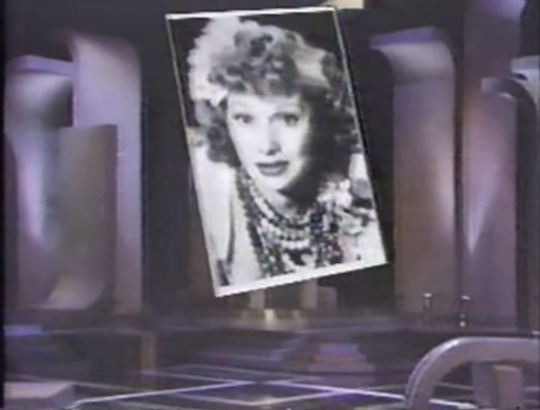
Being the first such telecast, the rating were poor. The special lost not only its time slot but the entire evening with just a 16 share and a 10 rating. ABC's TV remake of A Streetcar Named Desire won the night with a 39 share and a 23.1 rating.

Just as Carol Burnett introduces Lucille Ball in this first ceremony, in 1985 the roles were reversed when Lucy introduced Burnett for the honor.
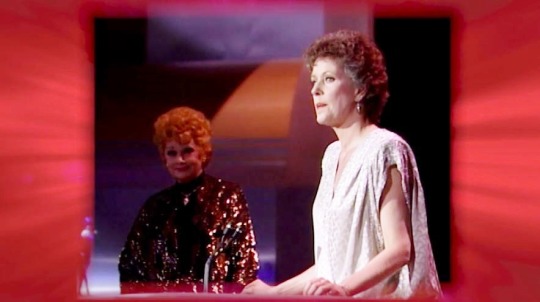
Of the other participants in this initial outing, Steve Allen was honored in 1986, Eric Sevareid in 1987, Barbara Walters in 1989, Jean Stapleton in 2002, Bea Arthur in 2008, and Sherman Hemsley in 2012.
Although Lucie Arnaz is announced in the opening credits, she did not appear in the telecast due to a prior obligation.

Cold Open Archive Footage
*Milton Berle (“Texaco Star Theatre”)
*Lucille Ball (“I Love Lucy”: “Lucy Goes to the Hospital”)
Vivian Vance (“I Love Lucy”: “Lucy Goes to the Hospital”)
William Frawley (“I Love Lucy”: “Lucy Goes to the Hospital”)
Desi Arnaz (“I Love Lucy”: “Lucy Goes to the Hospital”)
Ethel Merman (“Ford's 50th Anniversary”)
Mary Martin (“Ford's 50th Anniversary”)
Rod Steiger (“Marty”)
Richard M. Nixon (Checkers Speech)
Edward R. Murrow (“See It Now”)
Ed Sullivan (“The Ed Sullivan Show”)
The Beatles (“The Ed Sullivan Show”)
Walter Cronkite (“CBS Evening News”)
Carroll O'Connor (“All in the Family”)
**Rob Reiner (“All in the Family”)
Sally Struthers (“All in the Family”)
Jean Stapleton (“All in the Family”)
LeVar Burton (“Roots”)
Larry Hagman (“Dallas”: “Who Shot JR?”)
*also appeared live on stage
**also appeared live in audience

Also in the Audience
Gary Morton
Ted Danson
Rue McClanahan
Bill Macy
Ann Jillian
Sherman Hemsley
Isabel Sanford
Henry Winkler
Honorees and Hosts
Barbara Walters (Ceremony Host)
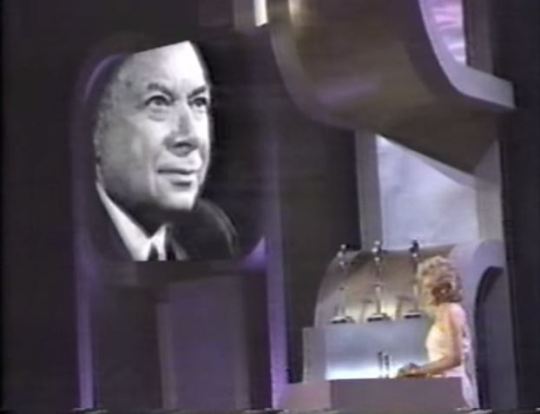
General David Sarnoff (posthumous), hosted by Barbara Walters
Sarnoff died in 1971 so his award is accepted by his son, Robert Sarnoff.
Lucy Connection: Walters interviewed Lucille Ball and Gary Morton in 1977.

Milton Berle, hosted by Steve Allen
A video tribute traces Berle's career and shows some of his classic comedy bits over the years.
Lucy Connection: Berle and Lucille Ball appeared many times together on his show and hers. Steve Allen interviewed Lucy Whittaker in “Lucy Calls the President” and was often host and panelist when Lucille Ball was on “What's My Line?” and "I’ve Got A Secret.”

William Paley, hosted by James Arness
A video tribute tracks Paley's career as a television pioneer to being the President of CBS.
During Paley's video tribute, a still frame from “I Love Lucy” is shown.
In the audience, Paley is sitting behind Lucille Ball.
Although the ceremony was broadcast on ABC TV, there was no attempt to lessen mentions of CBS and its programming.
Lucy Connection: Paley also appeared on television to tribute Lucille Ball in “CBS Salutes Lucy: The First 25 Years” in 1976.

Lucille Ball, hosted by Carol Burnett

The segment begins with a clip of “Lucy Goes To the Hospital” (ILL S2;E16) which starts with Lucy announcing: “Ricky. This is it!”

After the clip, Desi Arnaz Jr. enters and explains how his birth coincided with the birth of Little Ricky. Desi says that his sister Lucie couldn't attend because she is appearing on stage back East in The Guardsman. The show was produced at New Jersey's Paper Mill Playhouse also starring Lucie's husband Laurence Luckinbill. It was hoped that the show would transfer to Broadway, but this did not happen.

Desi Jr. introduces Carol Burnett.
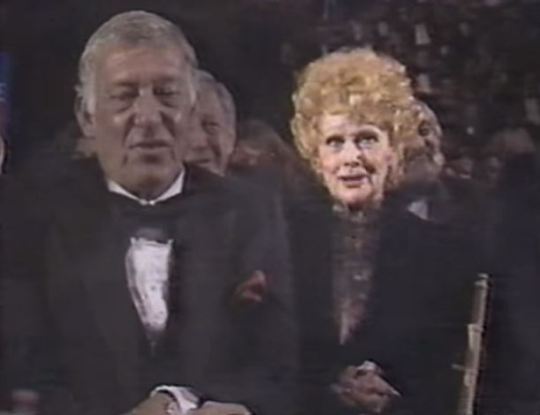
A cut-away to Lucille Ball in the audience reveals that she is holding back tears at her son's tribute. Gary Morton sits beside her. Carol tells of how Lucy came to the second night of Once Upon A Mattress on Broadway.
A video tribute tracks Lucy's childhood in Jamestown to her unlikely breakthrough television series “I Love Lucy.” Clips are from “The Audition” (Lucy as The Professor), “Lucy Does a Television Commercial” (“It's so tasty, too!”), “Hollywood at Last!” (at the Brown Derby), and “Job Switching” (“Speed it up!”).
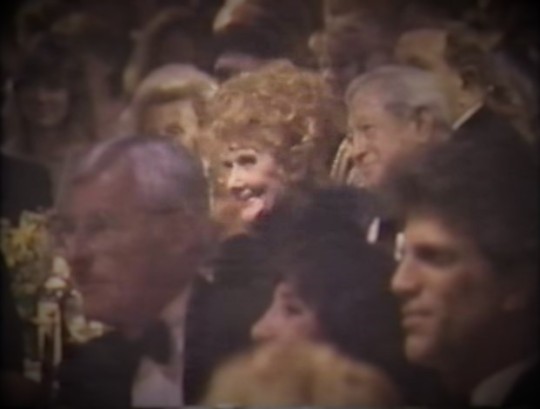
Lucy: “We all know we never do anything alone.”
Lucille Ball gets a standing ovation both walking to the podium and then again back to her seat. Cuts to the audience, show stars like Ann Jillian dabbing their eyes at Lucy's tearful acceptance speech.
Lucy Connection: Lucy and Carol Burnett were each others biggest fans. They alternately appeared on each others television shows, as well as numerous specials and awards shows.

Paddy Chayevsky (posthumous), hosted by Bob Fosse
A video interview with Chayevsky talks about his producing television dramas like “Marty”.
Eddie Albert and Peter Falk pay tribute to Chayevsky by acting out moments from his most notable work including Marty, The Tenth Man, and Network.
Susie Chayevsky could not be there to accept the award for her husband, so Fosse reads a message from her.
Chairman of the Academy John H. Mitchell takes the stage to talk about the Hall of Fame.

Lucy Connection: The following year Fosse and Ball were both part of “Night of 100 Stars II.”

Norman Lear, hosted by Beatrice Arthur

In a pre-taped segment, Jean Stapleton talks about the craft of acting which leads to a montage of scenes from “All in the Family” starring Carroll O'Connor, Rob Reiner, Sally Struthers, and Stapleton.

Bea Arthur talks about Norman Lear and quotes Paddy Chayevsky talking about Lear. Arthur starred in “Maude” a spin-off of “All in the Family.”
A video segment traces Lear's personal and career history. It includes clips from “Mary Hartman, Mary Hartman,” “All in the Family,” “Fernwood Tonight,” “One Day at a Time,” “Maude,” “Good Times,” and “The Jeffersons.”
Lucy Connection: Bea Arthur played Vera opposite Lucille Ball in the feature film Mame (1974). The two went on to appear together on “CBS On The Air” in 1978.
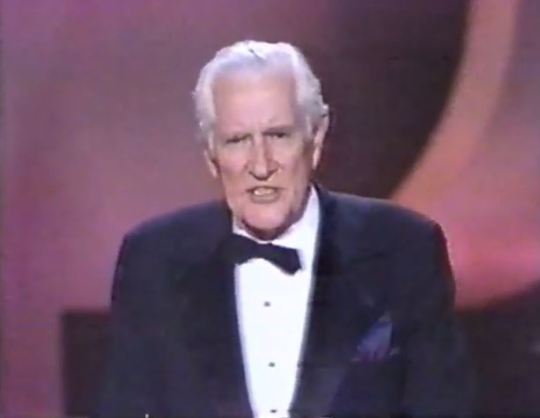
Edward R. Murrow (posthumous), hosted by Eric Sevareid
Sevareid talks about his personal and professional relationship with Murrow.
A video segment talks about Murrow's war reporting. Moments from his show “See It Now” are seen.
Murrow's wife Janet accepts the award.
Lucy Connection: Murrow and his show were parodied on “The Ricardos Are Interviewed” (ILL S5;E7) as “Face To Face” with Edward Warren.

“The Seventh Annual Television Academy Hall of Fame Awards”
September 23, 1991 ~ NBC
Honorees
Desi Arnaz (posthumously)
“I Love Lucy”
Leonard Bernstein
James Garner
Danny Thomas
Mike Wallace
Special Appearances
Lucie Arnaz, daughter of Desi Arnaz
Laurence Luckinbill, husband of Lucie Arnaz
Desi Arnaz Jr., son of Desi Arnaz
Amy Arnaz, wife of Desi Arnaz Jr.

Lucie Arnaz and Desi Arnaz Jr. were misty-eyed as they accepted the honor for their father. The brother and sister recounted how their own childhoods were reflected on their parent's show when the "Little Ricky" character was introduced.
Vintage footage of "I Love Lucy", including snippets from the pilot, and other moments from the careers of the honorees were shown at the ceremony held at the Regent Beverly Wilshire Hotel.
"I Love Lucy" producer Jess Oppenheimer's widow Estelle and original writers Madelyn Pugh-Davis and Bob Carroll Jr. accepted the award for the CBS show. It was the first show ever inducted into the Hall of Fame.
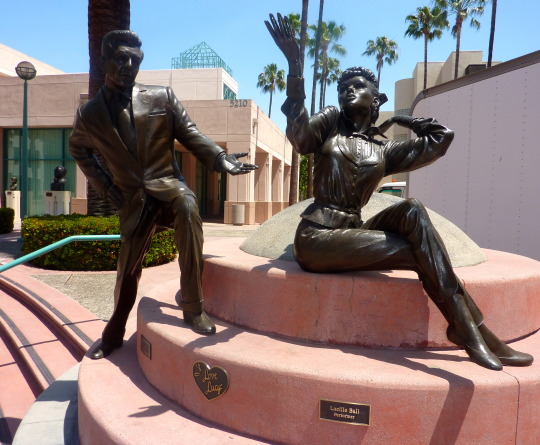
In 1994, Disney's Hollywood Studios in Orlando, featured an outdoor exhibition of statues and plaques dedicated to Hall of Fame winners. The exhibit was removed in 2016 and the statues and busts returned to the Academy.

“The 21st Annual Television Academy Hall of Fame Awards”
March 1, 2012 ~ NBC
Hosted by Jon Cryer
Honorees
Mary-Ellis Bunim and Jonathan Murray, “The Real World”
Michael Eisner, Disney Executive
Sherman Hemsley, “The Jeffersons”
Bill Klages, Lighting Designer
Mario Kreutzberger, aka “Don Francisco”
Chuck Lorre, writer
Vivian Vance and William Frawley (posthumous)

Doris Singleton (“I Love Lucy”) inducts Vivian Vance.
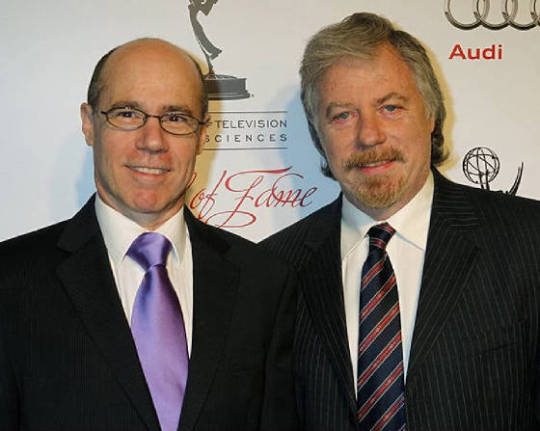
Barry Livingston and Stanley Livingston (“My Three Sons”) induct William Frawley
From 1960 to 1965, Frawley appeared on “My Three Sons” as Uncle Bub Casey.
Barry Livingston made two appearances on “The Lucy Show” as Arnold Mooney.
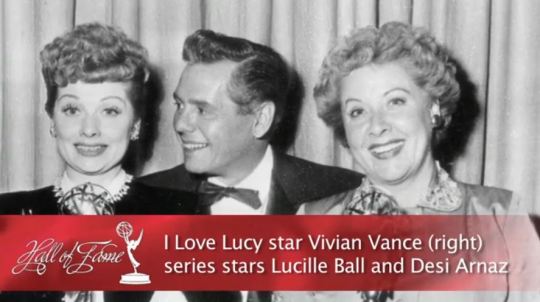
With this ceremony, all four main characters on “I Love Lucy” and the show itself are in the Television Hall of Fame.
#Television Academy Hall of Fame#Lucille Ball#Lucy#Desi Arnaz#Vivian Vance#William Frawley#I Love Lucy#Bea Arthur#David Sarnoff#William Paley#Edward R. Murrow#Eric Sevareid#CBS#NBC#TV#Barry Livingston#Stanley Livingston#Doris Singleton#Lucie Arnaz#Desi Arnaz Jr.#Jean Stapleton#Norman Lear#Milton Berle#Steve Allen#James Arness#Bob Fosse#Paddy Chayevsky
2 notes
·
View notes
Text
BOB HOPE’S WORLD OF COMEDY
October 30, 1976

Produced and Directed by Jack Haley Jr.
Written by: Charles Lee with Gig Henry, Jeffrey Barron, Katherine Green, and Jack Haley Jr.
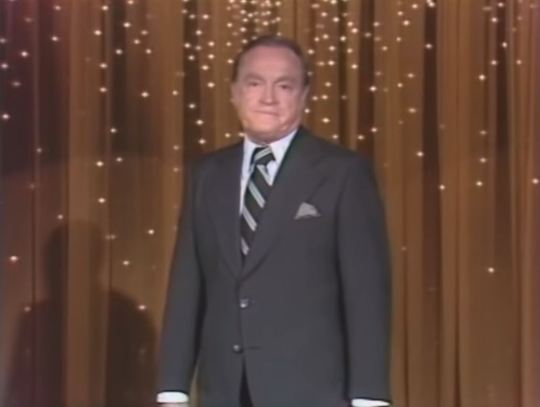
Bob Hope (Himself, Host) was born Lesley Townes Hope in England in 1903. During his extensive career in virtually all forms of media he received five honorary Academy Awards. In 1945 Desi Arnaz was the orchestra leader on Bob Hope’s radio show. Ball and Hope did four films together. He appeared as himself on the season 6 opener of “I Love Lucy.” He did a brief cameo in a 1964 episode of “The Lucy Show.” When Lucille Ball moved to NBC in 1980, Hope appeared on her welcome special. He died in 2003 at age 100.

Lucille Ball (Herself) was born on August 6, 1911 in Jamestown, New York. She began her screen career in 1933 and was known in Hollywood as ‘Queen of the B’s’ due to her many appearances in ‘B’ movies. With Richard Denning, she starred in a radio program titled “My Favorite Husband” which eventually led to the creation of “I Love Lucy,” a television situation comedy in which she co-starred with her real-life husband, Latin bandleader Desi Arnaz. The program was phenomenally successful, allowing the couple to purchase what was once RKO Studios, re-naming it Desilu. When the show ended in 1960 (in an hour-long format known as “The Lucy-Desi Comedy Hour”) so did Lucy and Desi’s marriage. In 1962, hoping to keep Desilu financially solvent, Lucy returned to the sitcom format with “The Lucy Show,” which lasted six seasons. She followed that with a similar sitcom “Here’s Lucy” co-starring with her real-life children, Lucie and Desi Jr., as well as Gale Gordon, who had joined the cast of “The Lucy Show” during season two. Before her death in April 1989, Lucy made one more attempt at a sitcom with “Life With Lucy,” also with Gordon, which was not a success and was canceled after just 13 episodes.
Neil Simon (Himself) is a playwright and screenwriter responsible for more than 30 plays, most of which were seen on Broadway and adapted into films. At the time, one of his most enduring plays The Odd Couple was being done on television. In 1983 became the only living playwright to have a New York theatre named in his honor. In 1960, when it was still called the Alvin Theatre, Lucille Ball appeared there in the musical Wildcat.
Don Rickles (Himself) worked as a stand-up comic in nightclubs for nearly 20 years before making his film debut in 1958. Rickles was known as an insult comic and became a staple of Hollywood roasts. In “Lucy the Fight Manager” (TLS S5;E20) he made his first and last acting appearance with Lucille Ball, but would be seen with her on variety shows and specials through 1988. Rickles was the voice of Mr. Potato Head in the animated Toy Story franchise. He died in April 2017 at age 90.
Norman Lear (Himself) is a television writer and producer responsible for such hits as “All in the Family,” “Maude,” “One Day at a Time,” “The Jeffersons,” and many others. He received three Emmy Awards for his work on “All in the Family.”
Caroll Spinney (Big Bird) started playing Big Bird on “Sesame Street” in 1969. In 2000, Big Bird was named a Living Legend by the United States Library of Congress. Created by Jim Henson, Big Bird is one of two Muppets to have a star on the Hollywood Walk of Fame. Spinney has been honored with four Daytime Emmy Awards for his portrayals on the series and two Grammy Awards for his related recordings. Two recordings of Spinney's voice have earned Gold Record status.

As with many Bob Hope specials, the show is sponsored by Texaco.
Bob Hope's opening monologue talks mainly about the Presidential Election, which would take place in two weeks. Incumbent president Gerald Ford ran against Jimmy Carter. He also touches on the World Series, the Swine Flu epidemic, Zsa Zsa Gabor's multiple marriages, and the CB radio craze.
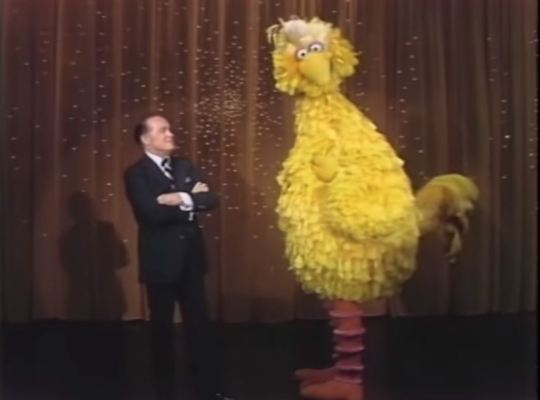
Bob's first guest is Big Bird from “Sesame Street” (Caroll Spinney). Big Bird does an ad-lib impersonation of Jack Benny that makes Hope laugh. This kicks off a montage of clips about animals.
A pet shop staffed by Bob Newhart
Jackie Gleason playing golf with Mildred, a chimp in How To Commit Marriage (1969)
Roy Rogers and Trigger “the wonder horse”
Julie London with puppies who prove not to be housebroken
Dan Rowan with a horse and Dick Martin with a camel
Hope with his dog in a vet's waiting room and Betty Grable there with a race horse
Hope and Greer Garson in divorce court fighting over their dog, Mr. Smith
Lassie as the subject of “This is Your Life” in a spoof from “The Bob Hope Show”
Next Hope introduces a montage of clips featuring international stars.
Maurice Chevalier (France)
Eva Gabor (Hungary)
Zsa Zsa Gabor (Hungary) with Angie Dickinson
Ingrid Bergman (Sweden)
Anita Ekberg (Sweden) with William Holden and Robert Strauss
Olivia Newton John (Australia)
Rex Harrison (England) and Lilli Palmer (Poland) with Janis Paige
David Niven (England) with Marilyn Maxwell

After a Texaco commercial, Bob introduces Lucy Ricardo aka Lucy Carmichael aka “the bionic woman of comedy” - Lucille Ball.

Lucy reminisces with Bob, which leads to a black and white clip of a sketch from “The Bob Hope Show” (September 24, 1962). In it, Lucy plays a District Attorney and Bob a gangster named Bugsy Hope.

Back on stage, Bob asks Lucy the secret to her show's endearing success. She says that it has to do with the realatable domestic situations created by the writers. Bob add that the physical comedy gives her comedy world-wide appeal. Lucy says that as of last count her shows were seen in 79 countries. Lucy says she's heard herself dubbed in Japanese, and that in South America it is HER who as the accent. Asked about being a legend, Lucy says it is “kind of like an obituary” but she's very grateful.
After another Texaco break, Bob talks about slapstick and introduces a montage of clips.
Ernie Kovacs trying to sell his house during an earthquake
Bob as Bobby Riggs playing against Billie Jean King (Ann-Margret)
Hope and Douglas Fairbanks Jr. as astronauts walking in space
Jack Benny using hidden cameras in his home to avoid paying Hope a guest-star fee

The second hour of the special kicks off with Hope introducing playwright Neil Simon. They talk about writing, the difference between drama and comedy, and ethnic humor, which is the cue for the next montage of clips about vaudeville.
Hope and Crosby do a routine
Hope, Crosby, Steve Allen, and Jack Paar are child actors competing for the same job
Danny Thomas as a candy seller interrupting Hope's act by stealing all his punchlines
Donald O'Connor as Wingo the Magnificent, a knife thrower, with Hope as Courageous Targo, his human target

Hope introduces Don Rickles, who promotes his new show “CPO Sharkey” which he compares to Phil Silvers in “Sergeant Bilko.” Hope says he's been the victim of insult comedy, which begins a montage of clips where Bob is insulted by:
Milton Berle
Tony Randall
Redd Foxx
Glenn Campbell
Gina Lollobridgida
Jerry Colonna
Dorothy Lamour
Tony Bennett
Fred MacMurray
Joan Crawford
George Sanders
Frank Sinatra
Troy Donahue
Hedda Hopper
John Wayne
Dyan Cannon
Debbie Reynolds (with Jack Benny)
Juliet Prowse

Bob Hope introduces Norman Lear, who mentions he has no shows on NBC. They talk about “Mary Hartman Mary Hartman,” the 'Family Hour,' his flops like “Hot L Baltimore,” and Archie Bunker. The next batch of clips is about satire.
Johnny Carson as a playboy movie star Rock Carson appearing on a talk show
Hope, Burt Reynolds and Dyan Canon spoof the TV series “Paper Moon”
A sketch called “Bananaz” (“Bonanza”) starring Bing Crosby, Bob Hope, and Juliet Prowse
A “Batman” spoof starring Martha Rae as Bat Girl and Bob Hope as the villain Lobsterman
Medical dramas are poked fun at by Hope, Barbara Eden, and Lee Marvin

After a commercial, the montages are about dancing. Some of Hope's choreographed clips:
Dancing with Raquel Welch
Doing Eddie Foy's famous sand dance
Soft shoe with Pearl Bailey
A trio with Jeanne Crain and Betty Hutton
A challenge dance with George Burns
Rare footage of Dean Martin dancing alongside Hope
Polly Bergen, Jimmy Durante and Hope dance as babies while on their knees (above photo)
A partner dance with Ginger Rogers
Hoofing with Hope and Jimmy Cagney
Modern dance with Ann-Margret
Hat and cane steps with Sammy Davis Jr.
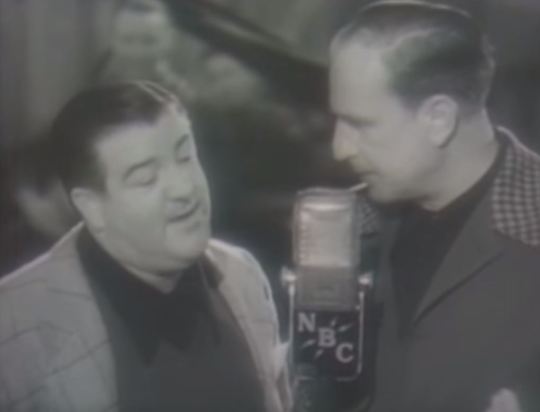
Hope wraps up the special with a look at some of the comedians of the past.
Budd Abbott and Lou Costello (above photo)
Fred Allen
Gracie Allen
Cliff Arquette aka Charlie Weaver
Mischa Auer
Robert Benchley
Jack Benny
Willy Best
Fanny Brice, the original 'Funny Girl'
Joe E. Brown
Billy Burke
Eddie Cantor
Jack Carson
Charles Correll, Amos of “Amos 'n' Andy”
Wally Cox
Joan Davis
Marie Dressler
Leon Errol
W.C. Fields
Billy Gilbert, the greatest sneeze in show business
Ted Healy and the Three Stooges
Hugh Herbert
Judy Holliday
Edward Everett Horton
Buster Keaton
Edgar 'Slow Burn' Kennedy
Ernie Kovacs
Burt Lahr
Stan Laurel and Oliver Hardy
Harold Lloyd
Carol Lombard
Harpo and Chico Marx
Donald Meek
Victor Moore
Jack Norton, the perennial drunk
Franklin Pangborn
Joe Penner
Will Rodgers
Irene Ryan, Granny of “The Beverly Hillbillies”
Charlie Ruggles
S.Z. 'Cuddles' Sakall
Max Sennett, king of the Keystone Cops
Arthur Treacher
Burt Wheeler and Robert Wolsey
Ed Wynn
This Day in Lucy History – October 29th
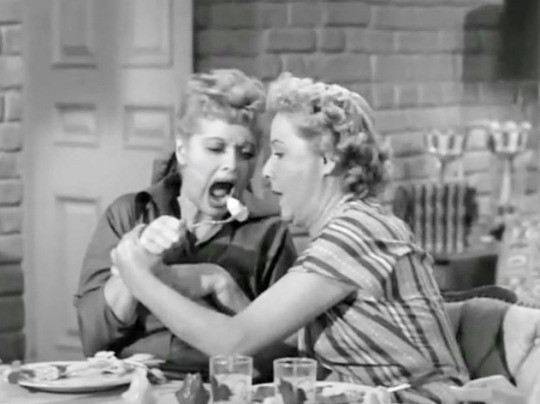
“The Diet” (ILL S1;E3) – October 29, 1951

"Visitor from Italy" (ILL S6;E5) – October 29, 1956
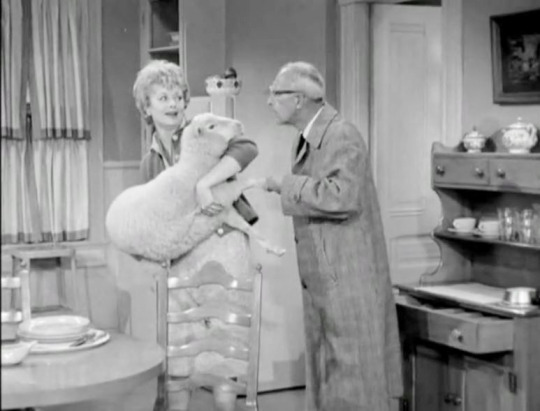
"Lucy Buys a Sheep" (TLS S1;E5) – October 29, 1961
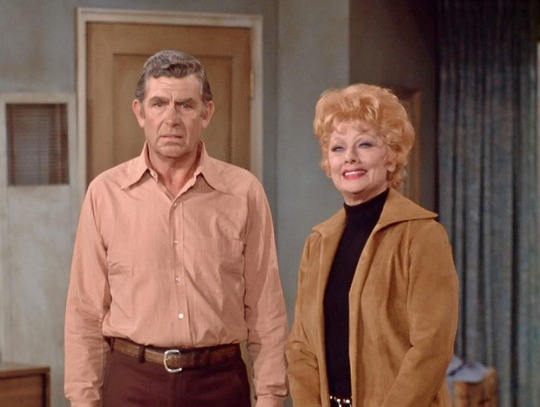
"Lucy and Andy Griffith" (HL S6;E8) – October 29, 1973
#Bob Hope's World of Comedy#Bob Hope#Lucille Ball#Neil Simon#Norman Lear#BIg Bird#Caroll Spinney#1976#TV#NBC#Jack Haley Jr.#Don Rickles#Texaco
0 notes
Text
ALL STAR PARTY FOR LUCILLE BALL
December 9, 1984

Directed by Dick McDonough ~ Written by Paul Keyes
Lucille Ball (Honoree), Monty Hall (Host), Nelson Riddle and His Orchestra
Monty Hall was the honorary chairman of Variety Clubs International.
Featuring Lucy's family: Gary Morton, Lucie Arnaz, and Desi Arnaz Jr..
Lucy's former (and future) guest-stars: Sid Caesar, Sammy Davis Jr., Dean Martin, John Ritter, as well as uncredited appearances by Barbara Eden, Eva Gabor, Bernie Kopell, Rich Little, Cesar Romero, Art Linkletter, Kirk Douglas, Bea Arthur, Ken Lane (Dean Martin's pianist), and Ricardo Montalban
Presenters and entertainers also include: Joan Collins, Cary Grant, Shelley Long, Carl Reiner, and Vicky McLure
Former Variety Clubs honorees in attendance: James Stewart, Burt Reynolds, and Frank Sinatra
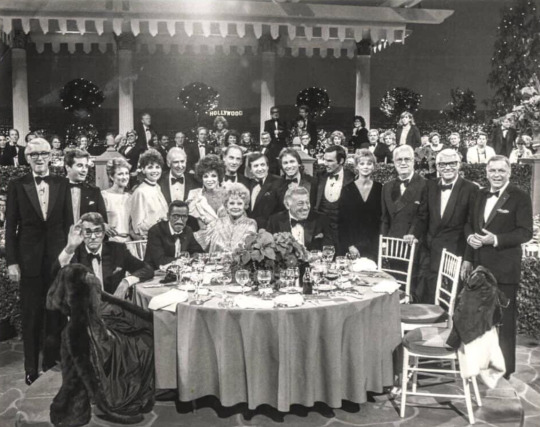
Also present at the party (all uncredited): Loni Anderson, Lloyd Bridges, James Caan, Sammy Cahn, Ted Danson, Barbara and Marvin Davis (Childhood Diabetes Foundation), Altovise Davis, Charles Durning, Farrah Fawcett, George Hamilton, Barbara Harris (Mrs. Cary Grant), Lisa Hartman, Ted Lange, Vicki Lawrence, Carol Lawrence, Michele Lee, Olympian Carl Lewis, Hal Linden, Karl Malden, Roddy McDowell, Gloria Hatrick McLean (Mrs. Jimmy Stewart), Donna Mills, Stefanie Powers, Barbara Sinatra, Joan Van Ark, Dick Van Patten, Dionne Warwick, Dennis Weaver, Raquel Welch, and Betty White.

Taped at Warner Brothers Studios on November 18, 1984 and aired on CBS on December 9, 1984. Due to the December air date, the room is decorated in poinsettias. Lucy makes her entrance holding a dozen long-stem roses. At Lucy's center table is her husband Gary Morton, Frank and Barbara Sinatra, Burt Reynolds and Loni Anderson, Jimmy and Gloria Stewart, Cary Grant and Barbara Harris.

Variety, the Children's Charity is an organization founded in Pittsburgh, Pennsylvania in 1927, when a group of eleven men involved in show business set up a social club which they named the Variety Club. On Christmas Eve 1928, a baby was left on the steps of the Sheridan Square Film Theatre. When efforts to trace the mother failed, the Variety Club named the child Catherine Variety Sheridan, after the club and the theatre on whose steps she was found, and undertook to fund the child's living expenses and education. Later the club decided to raise funds for other disadvantaged children. The discovery of the baby inspired the film Variety Girl (1947).
The program was the second highest rated show of the night with a 21.7 share, second only to its lead-in “Murder She Wrote” with a 22.3 share.
Monty Hall says that this is the 9th annual Variety Club All-Star Party. Two years later, Lucille Ball hosted the 1986 event honoring Clint Eastwood. In 1982 she participated in the All-Star Party for Carol Burnett.

In an interview to promote the program, Lucy said that Lucie Arnaz wrote the lyrics to the “I Love Lucy” tribute song that she and Desi Jr. sang. But on the show, Burt Reynolds claims the special lyrics were by Sammy Cahn.
Also in the interview, Lucy says she'd never do another series again. Two years later she changed her mind and agreed to do “Life With Lucy” for Aaron Spelling and ABC. She also says she'd like to do a drama about seniors being driven from their homes. It is likely that by November 1984 Lucy was already in talks to do her final film, TV's Stone Pillow, which would begin filming in April 1985 and air in November of that same year.

To kick off the event, the Nelson Riddle Orchestra plays “Hey Look Me Over” as Lucy's entrance music. Lucille Ball introduced the song in the 1960 Broadway musical Wildcat by Cy Coleman.

Joan Collins (TV's “Dynasty”) details Lucy's background and rise to fame; 76 films and over 500 television programs. She reminds Lucy that she auditioned for the role of Scarlet O'Hara in Gone With The Wind. In 1987 Collins was honored with her own All-Star Party.
Joan: “Not even Clark Gable could look into that face and say 'Frankly, my dear, I don't give a damn’”.
Frank Sinatra sings “You Are the Sunshine of My Life” to Lucy, a 1973 song written and recorded by Stevie Wonder.

Sinatra says to Lucy “You're the best thing to happen to Adam's rib.” This causes a quizzical look to come over Lucy's face. Later in life, Sinatra was known for his occasional odd references and non-sequitur. He had been honored by Variety Clubs the previous year, 1983.
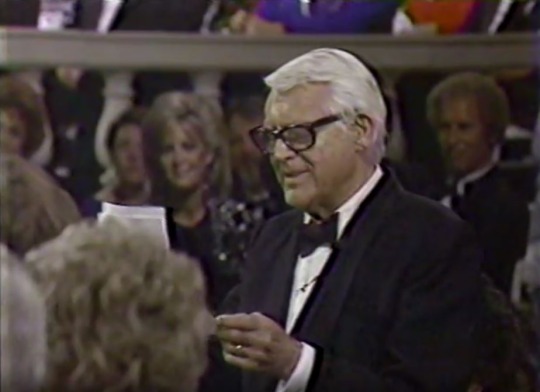
Cary Grant reads a letter from President Ronald Reagan. Reagan was honored with an All-Star Party the following year, 1985. When first addressing Ball, Grant says “Lucy, Lucy, Lucy,” imitating his falsely attributed quote “Judy, Judy, Judy.” Grant would also read a congratulatory telegram from President Reagan in 1986, when Clint Eastwood was honored.

Carl Reiner introduces and interviews Sid Caesar as (all the way from Germany) Professor Ludwig Von Blearyeyes, the world's most renowned viewer of Lucille Ball's television shows. The Professor describes his second favorite episode of “I Love Lucy” which is a crazy mash-up of parts of several episodes, including “Lucy Goes To The Hospital” (ILL S2;E16), “The Audition” (ILL S1;E16), and “Pioneer Women” (ILL S1;E25). The Professor then recounts the same episode in Italian, proving that Lucy is known all over the world. The description of the Professor's favorite episode sounds like the plot to King Kong.
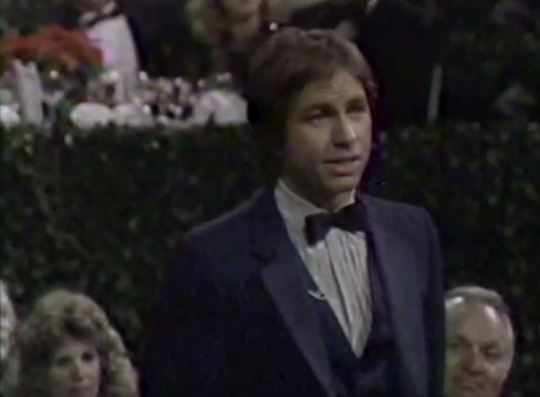
John Ritter is introduced as a 'member of Lucy's mutual admiration society,' a fellow comedic actor on TV. Lucille Ball had hosted a two-part retrospective of Ritter's show “Three's Company” in 1982. Ritter would be Ball's first celebrity guest-star on “Life With Lucy” in 1986.

Ritter introduces Olympian Carl Lewis and Vicki McClure, a young woman from Los Angeles chosen to sing at the opening ceremonies of the 1984 Summer Olympics. McClure reprises the song she sang at the ceremonies, “Reach Out and Touch (Somebody's Hand).” The song by Ashford and Simpson was the debut solo single of Motown singer Diana Ross, released in April 1970. McClure, a checkout girl at the Hughes Market in Canoga Park, was at first just the rehearsal stand-in for Ross but she was chosen for the real thing because as an unknown, she reflected the youthful image that organizers hoped to project for the games.

Shelley Long (TV's “Cheers”) admits that she never worked with Lucy, but admires her as a role model working mother.
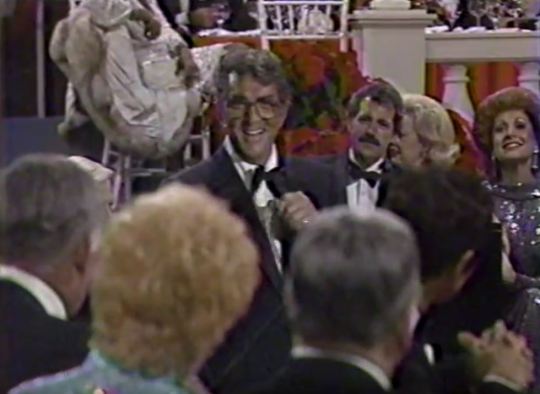
Long 'passes the baton' to Dean Martin, while the Nelson Riddle Orchestra plays his signature song “Everybody Loves Somebody Sometime,” a song written in 1947 by Sam Coslow. Martin sang it in “Lucy Dates Dean Martin” (TLS S4;E21), as well as on "Lucy Gets Lucky," their 1975 special. Martin (with Ken Lane at the piano) sings “When You're Smiling” by Larry Shay, Mark Fisher and Joe Goodwin. He changes the lyrics to suit the occasion:
“When you're Lucy,
When you're Lucy,
You're never off TV.
When you're Lucy,
That's all you see,
You're own life constantly.
On Channel 7, 5, 4, 9, 8 or 10,
Wherever you turn,
That's our Lucy again.
When you're Lucy,
When you're Lucy,
You're never off of TV.”
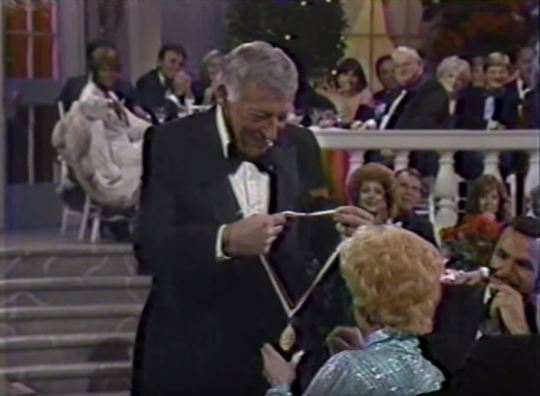
Jimmy Stewart says that Lucy and Gary are celebrating their wedding anniversary. Stewart introduces Gary Morton, who presents Lucy with an Olympic-style medal for being a “gold medal wife.”

Sammy Davis Jr.'s first remarks incorporate references to the 1961 musical Stop the World – I Want To Get Off by Anthony Newley and Leslie Bricusse. Davis starred in the 1978 Broadway revival of the show as well as the TV special “Sammy Stops the World” that same year. He then gives a heartfelt and emotion tribute to Lucy's world-wide and timeless appeal.
Sammy: “Lucille Desiree Ball, daughter of Desiree and Henry Ball, who stopped the world and said 'I wanna get on' in Jamestown, New York. On an August the sixth, this world of ours took little note then, but will long, long remember. Be proud, Lucy, of your legacy. Very proud. Be aware, as you sit here among your grateful friends, the sun never sets on Lucille Ball. All over this worried world tonight. Nations of untold millions are watching reruns they also watched the first time around. In Iran and Iraq on this very night, the fighting stops long enough for frightened people to laugh again as you hide the frozen meat in the furnace. In Finland after a long hard day at the factory, husbands and father are just settling down to watch the American girl they love the most get half bombed on her first TV commercial. And in Lebanon, ravished Lebanon, worried parents of many fates share a common experience, with innocent war-torn children, who tune in to forget the debris long enough to feed their hungry souls with laughter as you parade down the Champs Elysee in an outfit that drove the Paris designers to double aperitifs. Across the world in Singapore, Japan, whole families gather for a 'Lucy break' as laughter erases their problems watching you rehearse your trip to the hospital for television's first birth. And in Mexico, Brazil, Argentina, Chile, Columbia, Honduras, Guatemala, Peru, San Salvador, Venezuela, and other sunshine countries, laughter crosses friendly and unfriendly borders as you try to keep up with the chocolates on the assembly line. Yes, my dear friend, Lucy, you are the one they love most.”
The specific “I Love Lucy” episodes Davis is referring to (in order) are “The Freezer (ILL S1;E29); “Lucy Does a TV Commercial” (ILL S1;E30); “Lucy Gets a Paris Gown” (ILL S5;E20); “Lucy Goes to the Hospital” (ILL S2;E16); and “Job Switching” (ILL S2;E1). Lucy later said that Davis wrote the above speech himself.
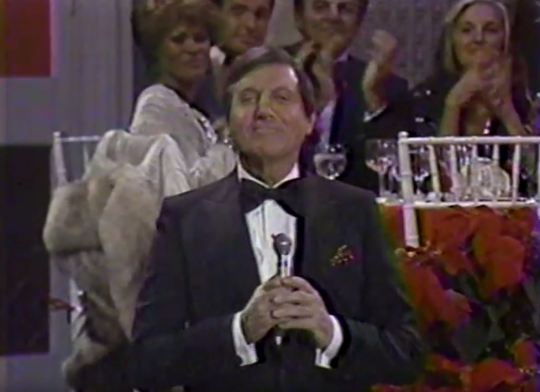
Monty Hall returns to tell Lucy that Variety Clubs International has added new facilities in children's hospitals dedicated to John Wayne (in Miami), Elizabeth Taylor (in New York City), Jimmy Stewart (in Minnesota), Ingrid Bergman (in Des Moines), Jack Lemmon (in Buffalo), Burt Reynolds (in Atlanta), Carol Burnett (in Los Angeles), and Frank Sinatra (in Seattle).

Burt Reynolds recounts his first meeting Lucy, through an introduction by Lucie Arnaz. Lucie and Reynolds dated for a year and a half. Nelson Riddle and the Orchestra play the “I Love Lucy” theme by Eliot Daniel. Lucie and Desi Jr. then sing the song to their mother with special lyrics by Sammy Cahn. Ball struggles to hold back the tears. Lucie Arnaz is noticeably pregnant. She would give birth to her daughter, Katherine Luckinbill, on January 11, 1985.
To the strains of the title song from Mame, Lucy joins Monty Hall at the front of the room where he informs her of the naming of a research library in her honor at the Barbara Davis Juvenile Diabetes Hospital in Denver, Colorado.

Lucille Ball thanks everyone for the tribute. She asks Mike Frankovich of Variety Clubs to stand and take a bow.
Lucy: “To everyone who said such wonderful things about me tonight, I just wish you were all under oath.”
At the very end, the entire crowd sings “Happy Anniversary” (to the tune of “Happy Birthday”) to Lucy and Gary, who were married on November 19, 1961.
Oops! Over the entrance music, Lucille Ball can be heard to greet Dionne Warwick saying “Hi Diane.” Did she think Warwick was Diahann Carroll? When Lucy sees Eva, she just repeats over and over “A Gabor! A Gabor! A Gabor!” perhaps unsure if it is Eva or Zsa Zsa. Bear in mind that Ball did not know the guest list ahead of time. While the announcer reads off the guests stars for the opening credits, Lucy can be heard to say “I hope I remember the names.”
When Gary Morton puts the Olympic medal around Lucy's neck, she says “Turn it around!” Lucy wanted the front of the medal facing the camera. She then jokes that she is “always directing.”
This Date in Lucy History – December 9
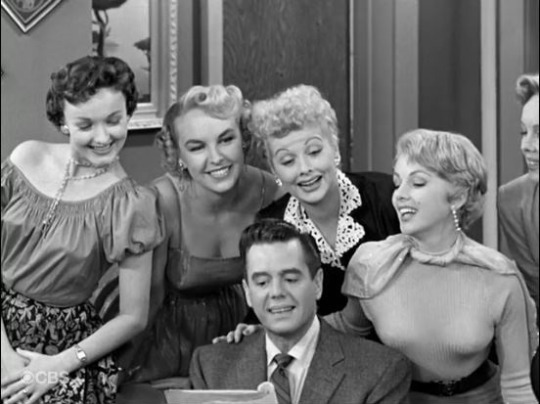
"Don Juan and the Starlets" (ILL S4;E18) filmed on December 9, 1955

"Lucy and the Military Academy" (TLS S2;E10) aired December 9, 1963
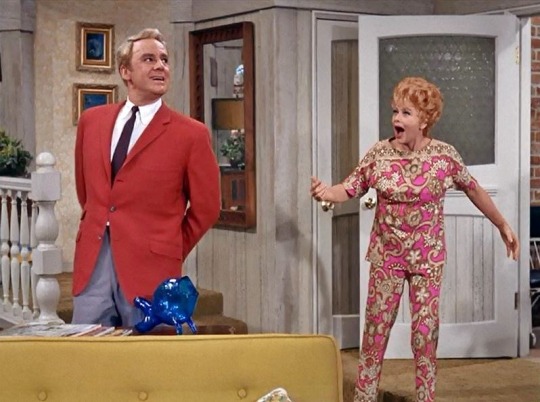
"Guess Who Owes Lucy $23.50" (HL S1;E11) aired December 9, 1968
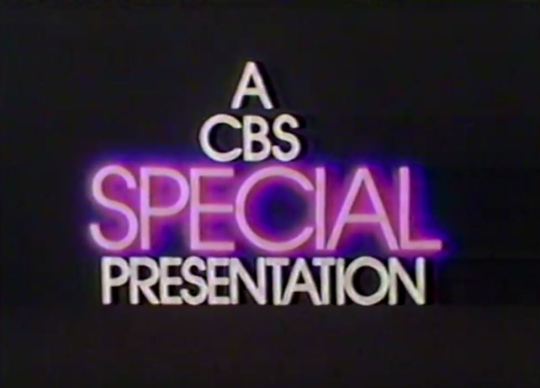
#All Star Party for Lucille Ball#Lucille Ball#Variety Clubs International#Gary Morton#Lucie Arnaz#Desi Arnaz Jr.#Frank Sinatra#Cary Grant#Jimmy Stewart#Monty Hall#Nelson Riddle#Sammy Davis Jr.#Dean Martin#Sid Caesar#Carl Reiner#Joan Collins#Paul Keyes#Vicky McClure#Reach Out and Touch Somebody's Hand#I Love Lucy#Dick McDonough#Barbara Davis#Burt Reynolds#Loni Anderson#John Ritter#Hey Look Me Over#Mame#Carl Lewis#1984 Olympics#Shelley Long
5 notes
·
View notes
Text
LUCY AND THE GOLD RUSH
S1;E13 ~ December 30, 1968
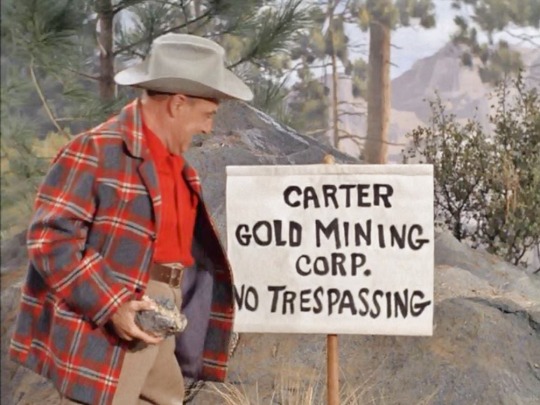

Directed by Jack Donohue ~ Written by Howard Harris and Ben Gershman
Synopsis
When Kim and Craig dig up rock specimens for a school Geology project, one of them turns out to be gold. This inspires Lucy and Harry to go prospecting to make their fortune.
Regular Cast
Lucille Ball (Lucy Carter), Gale Gordon (Harrison Otis Carter), Lucie Arnaz (Kim Carter), Desi Arnaz Jr. (Craig Carter)
Guest Cast

Rhodes Reason (Jeff Simpson) appeared on “Lucy and Carol Burnett: Part One” (TLS S6;E14) and here marks the second of his five episodes of “Here's Lucy” having just been seen in the previous episode, “Lucy, the Matchmaker” (S1;E12). He also appeared with Lucille Ball in the 1974 TV movie Happy Anniversary and Goodbye.
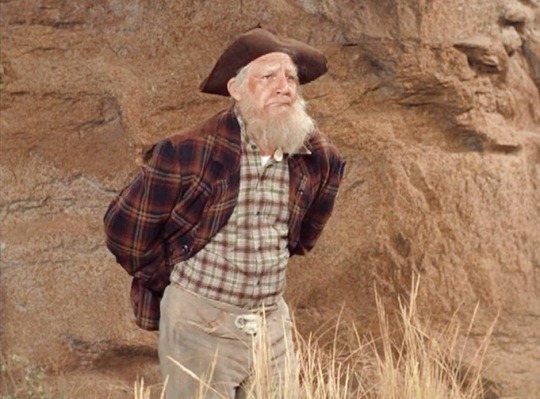
Philip Bruns (J. Calvin Coolidge Tompkins) is probably best remembered as Mary Hartman's dad George on “Mary Hartman, Mary Hartman” (1976-77). This is his only appearance opposite Lucille Ball.
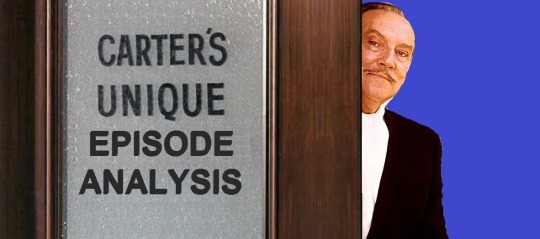

This is the final episode of the 1968 calendar year; a year that saw the end of “The Lucy Show,” the birth of “Here's Lucy,” and the first full year of Paramount owning the former Desilu Studios.

There was no new episode on Monday, December 23rd although CBS did air new episodes of “Gunsmoke,” “Family Affair,” and “Mayberry R.F.D.” that evening. Instead, they reran the first episode of the season / series “Mod, Mod Lucy” (S1;E1).
This is the only collaboration between writers Howard Harris and Ben Gershman and also their only time writing for Lucille Ball.
For the first time on “Here's Lucy,” we hear Gale Gordon's unusual pronunciation of “Los Angeles” using a hard 'g'.
Harry wants to dictate a letter to Consolidated Machinery (before a rock falls on his foot and Lucy runs out of steno pads).

Harry says the gold in their rock could be worth as much as $14 a ton! Unfortunately, they later find out it will cost $35 a ton to mine it!
Jeff Simpson says he is staying at the Explorer's Club. This may be a nod to Los Angeles's famous Adventurers' Club, a private male-only organization formed in 1922.

Under pressure from Uncle Harry, Lucie finally remembers where they found the gold rock: they took the freeway to the Calabasas turnoff, took the Old Tapanga Canyon Road, and walked 3 miles.

Lucy references the Grand Canyon while digging for gold. Although the Ricardos and the Mertzes all wanted to see the Grand Canyon on their road trip to California, no episode was devoted to it.
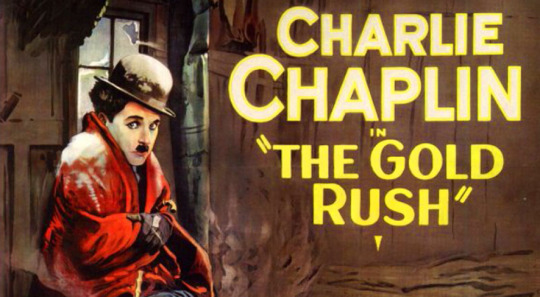
J.C.C. Tompkins is named for President Calvin Coolidge who was inaugurated in 1925, the same year the silent movie The Gold Rush premiered starring Charlie Chaplin.

Calvin Coolidge spent the summer of 1927 in the Black Hills, South Dakota and was photographed panning for gold with his wife.

After selling his land to Harry for $1,000, J.C.C. Tompkins goes off singing “I'm in the money!” The song “We're in the Money” (aka "The Gold Diggers' Song") is from the 1933 film Gold Diggers of 1933 and was written by Al Dubin and Harry Warren. It is now part of the stage musical 42nd Street.

This episode allows Gale Gordon to do much of the physical humor normally done by Lucille Ball. He barricades himself in his office with a Rube Goldberg-like method and then tries to break open the gold rock, unsuccessfully but humorously. At the end of the episode, he falls down a mine shaft.

This episode was loosely remade in season 6 as “Harry Catches Gold Fever” (S6;E12). In that episode, Kim and Craig are not present and Harry pans for gold rather than mines for it.
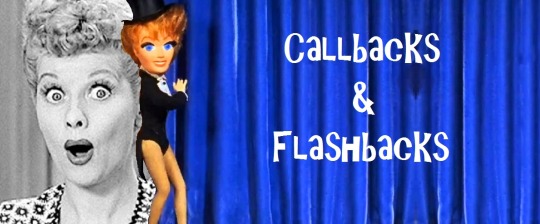

Lucy Ricardo and the gang went prospecting for the 1950's version of gold – uranium - in “Lucy Hunts Uranium,” a 1958 episode of “The Lucy-Desi Comedy Hour” that also starred Fred MacMurray. While that episode was shot on location in the California desert (standing in for Nevada), this one is shot entirely on the soundstage at Paramount.
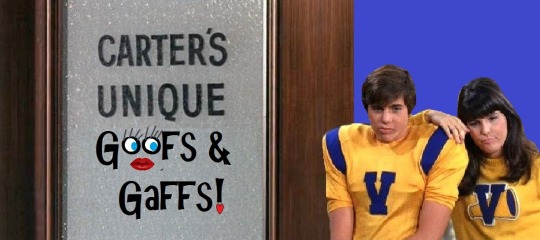
A Matter of Class! Kim and Craig are in the same Geology class, despite Kim being two years ahead of Craig in school.

Menu Mistakes! When Harry pays a surprise visit with a 14-pound roast turkey (at 29 cents a pound), Lucy says she was having leftovers for dinner, but instantly produces a fancy tray of hors d'oeuvres from the kitchen. She also coincidentally has cranberry sauce already on the table.
Where the Floor Ends! The wide shot reveals where the wall-to-wall carpeting meets the concrete stage floor, a frequent error on all “Lucy” sitcoms.
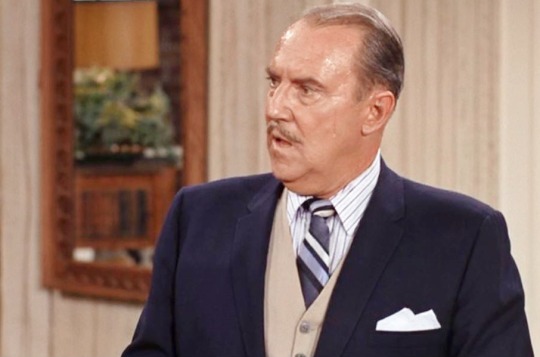
Hot Set! In that same scene, Gale Gordon is sweating profusely. Despite having a handkerchief in his pocket, the actor resists the temptation to mop his dripping brow. He is also sweating in the gold mining scene. Gordon may have been ill or reacting to the heat in the studio - or both!

“Lucy and the Gold Rush” rates 3 Paper Hearts out of 5
This is a pretty standard Hollywood ‘Gold Rush’ plot (complete with a grizzled old prospector from 1849), but Lucy still manages to find the humor in it.
#Here's Lucy#Lucille Ball#Gale Gordon#Lucie Arnaz#Desi Arnaz Jr.#Rhodes Reason#Lucy and the Gold Rush#Gold#Gold Rush#Philip Bruns#Calvin Coolidge#The Gold Rush#We're in the Money#Gold Diggers of 1933#Los Angeles#1968#CBS#TV
6 notes
·
View notes
Text
Lucy is a Soda Jerk
S1;E23 ~ March 4, 1963


Synopsis
To pay for her school drum majorette uniform, Lucy's daughter Chris takes a job as a waitress at an ice cream parlor. When Chris can't make it one day, Lucy and Viv take over with disastrous results!
Regular Cast
Lucille Ball (Lucy Carmichael), Vivian Vance (Vivian Bagley), Jimmy Garrett (Jerry Carmichael), Ralph Hart (Sherman Bagley), Candy Moore (Chris Carmichael)
Guest Cast

Paul Hartman (Mr. Wilbur) was 'born in a trunk' in 1904 to a theatrical father known as 'the Ziegfeld of the Pacific Coast'. He performed as part of a family act from the age of six weeks and was part of a tour to Japan in the cast of The Mikado at the age of two. With his wife Grace he formed a famous ballroom-dancing partnership, touring the vaudeville circuit and also appearing on Broadway. In 1948, they had a huge hit with the revue Angel in the Wings, both winning Tony Awards as Best Leading Players in a Musical, the first such awards ever given out. He is probably best remembered as Emmett Clark on “The Andy Griffith Show” and “Mayberry R.F.D.” This is his only appearance on “The Lucy Show.”

Lucie Arnaz (Cynthia) is the real-life 12 year-old daughter of Lucille Ball and Desi Arnaz. She was born in 1951 just before the premiere of “I Love Lucy.” Lucille Ball was actually pregnant during the filming of the show’s pilot. Despite rumors to the contrary, Lucie Arnaz never appeared on “I Love Lucy.” She made an uncredited appearance on this series in “Lucy is a Referee” (S1;E3) as one of the spectators at the football game. Here she plays Chris’s friend Cynthia, a character mentioned in the premiere and in many subsequent episodes. Lucie also appeared with her mother and brother Desi Jr. on “Here’s Lucy.”
Although her arrival was much-anticipated, the character of Cynthia returns in just one more episode, “Lucy is a Chaperone” (S1;E27). Lucie Arnaz, however, returned to the show in later seasons in other roles.
The Customers at Mr. Wilbur's Ice Cream Parlor are played by:

Ruth Crews was previously seen as Dorothy in “Lucy and Viv Are Volunteer Firemen” (S1;E16), although the role of Dorothy was taken over by Dorothy Konrad in “Lucy's Barbershop Quartet” (S1;E19) probably because the character needed to be able to sing well enough to carry four part harmony. This is Ruth Crews’ final appearance on the series.

James Gonzales (above left) was a popular Hollywood extra who first acted with Lucille Ball in the 1953 film The Long, Long Trailer. He was previously seen on the show as Stan Williams, a friend of Harry's he brings along to date Viv when “Lucy Digs Up a Date” (S1;E2). He will be seen in 21 future episodes of “The Lucy Show” and 3 episodes of “Here’s Lucy.”
James Gonzales is seated with Desi Arnaz Jr. in the final scene.
Desi Arnaz Jr. is, of course, the real-life son of Lucille Ball. His 1953 birth was worked into the plot of “I Love Lucy” although Desi Jr. never played the role of Little Ricky Ricardo. He did, however, appear on the final half-hour episode of the series “The Ricardos Dedicate a Statue” (ILL S6;E27) in a crowd scene. His first series appearance was as one of the pee-wee football players in “Lucy is a Referee (S1;E3). He plays Billy Simmons in four future episodes of the series and also appeared with his mother and sister on “Here’s Lucy.”

Jerry Hausner marks his return to the Desilu family. He was featured as Jerry, Ricky's agent in the pilot and first three seasons of “I Love Lucy.” He left the show after a disagreement with Desi Arnaz. Interestingly, Desi Arnaz left “The Lucy Show” and Desilu before Hausner's return. Although this is his only appearance on this series, he does return for a 1973 episode of “Here's Lucy.”

The original script was titled “Lucy is a Drum Majorette.” Jimmy Garrett's mother, Helen Moore Garrett, coached Lucy and Chris in baton twirling. Helen had been a champion baton twirler and marched in the Rose Parade for many years. It is likely that the original version had Lucy filling in for Chris as a drum majorette rather than as a soda jerk.
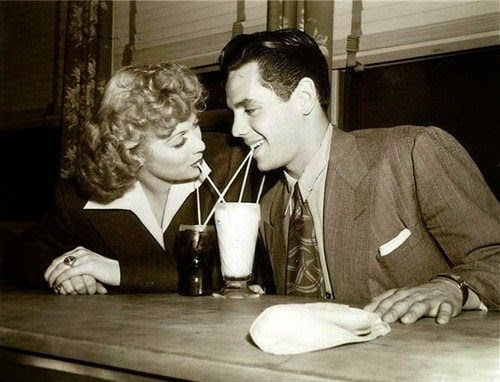
The title refers to the employee behind the soda fountain that makes the ice cream sodas and milkshakes which was a popular mid-20th century hangout for teenagers. During this time drug stores often featured food counters and were not strictly places that distributed pharmaceuticals.
When she was starting out in New York City, auditioning for Broadway shows, Lucille Ball worked as a soda jerk at Walgreens. She later said that she was fired for forgetting to put bananas in the banana splits!

Broadway icon Ethel Merman was in the studio audience for this episode's filming. Desilu produced a pilot for Merman called “Maggie Brown” (above) which was aired as part of CBS's “Vacation Playhouse” in September 1963. In return, Lucille Ball and Gary Morton attended the filming of Merman's pilot, which was not picked-up for series. Instead, Merman would be featured in the season two opener of “The Lucy Show.” In 1963, Merman had left her Broadway career behind for a bit, to concentrate on films such as It's a Mad, Mad, Mad, Mad, World (1963). Vivian Vance understudied Merman on Broadway in Anything Goes (1934).

Lucy fell asleep reading Elite Magazine, a periodical that appears to have been made-up by the props department. On “I Love Lucy” Desilu often used the names of real magazines in order to thank them for promoting their show.

Chris's high school team is the Danfield Bears and Chris and Cynthia have been selected as drum majorettes. Lucy is enthusiastic at first, but she loses her enthusiasm when she hears that the uniform will cost $40. Lucy says she won a twirling cup for Jamestown High School. Viv adds that she was 19th runner up. Lucy says that her uniform only cost $7.50. If we go buy Lucille Ball's real age, that would put the date around 1925 and be the equivalent of $13 in 1963's economy.

Lucille Ball demonstrates some baton twirling and marching that are similar to the moves she displayed singing “Hey Look Me Over” in Broadway's Wildcat.

Chris wonders if Doris Day started out as a Soda Jerk. Doris Day, a popular singer and actor of the time, was previously mentioned on “No More Double Dates” (S1;E21) and will be mentioned again in “Lucy Goes to a Hollywood Premiere” (S4;E20).

Much of the action of the episode is set at Wilbur's Ice Cream Parlor. According to the signs, Malts and Hot Fudge Sundaes cost 55 cents. The average cost of a one-scoop sundae at Baskin Robbins today is about $4.50 so the cost has kept up with the rate of inflation. Another sign says “Try Wilbur's Special” but it is never stated what the special actually is.
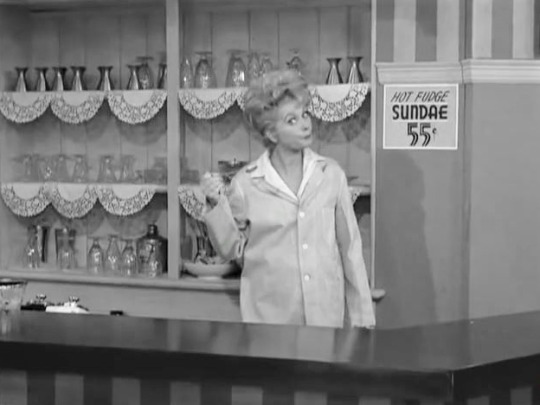
Lucy and Viv's rhyme for remembering the ice cream flavors is sung to the tune of “Twinkle Twinkle Little Star”:
“Chocolate, Strawberry, Rocky road, Coffee
Coconut, Tooty-Fruity, Huckleberry, Toffee
Peppermint, Pistachio, Chocolate Chip
Cinnamon, Burnt Pecan, Tangerine Whip
Cranberry, Fudge Ripple, Lime, Vanilla
Pineapple, Lemon Crunch and Marshmilla
(to the tune of “Shave and a Haircut”)
….the flavor of the month is - Kumquat!”
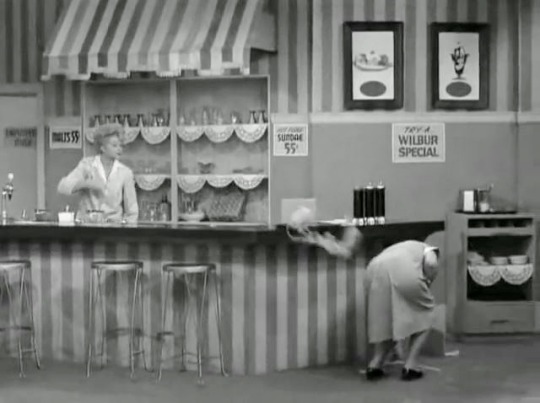
This episode features the age-old TV trope of sliding drinks down a long bar to the server. In this case it is ice cream sodas and the bar is a counter. In comedies, the items usually hit the floor, which they do here as well. This same gag was part of the “Western Frolics” in “Milton Berle Hides Out at the Ricardos,” a 1959 episode of “The Lucy-Desi Comedy Hour.”

Lucille Ball serves ice cream again in a 1973 episode of “Here's Lucy” titled “Lucy and the Franchise Fiasco.”

The day this episode aired, March 4, 1963, was the last day that the Mona Lisa was exhibited in the USA. Lucy has a disastrous encounter with a replica Mona Lisa in “Lucy Goes To Art Class” (S2;E4) as well as on a 1977 TV special.
Callbacks!

Lucy filling in for Chris at the ice cream parlor is reminiscent of when Lucy Ricardo filled in for Mario at Mr. Martinelli's Pizzeria in “Visitor from Italy” (ILL S6;E5).
Blooper Alerts!
Melody Mistake! When Lucy sings the Ice Cream flavors for Customer #2 (Jerry Hausner), she sings the wrong melody for a portion of “Twinkle Twinkle Little Star” but gets back on track again for the rest of the song.

“Lucy is a Soda Jerk” rates 4 Paper Hearts out of 5

#Lucy is a Soda Jerk#The Lucy Show#Vivian Vance#Lucille Ball#1963#TV#CBS#Ice Cream#Soda Fountain#Soda Jerk#Lucie Arnaz#Desi Arnaz Jr.#Ruth Crews#James Gonzales#Paul Hartman
0 notes